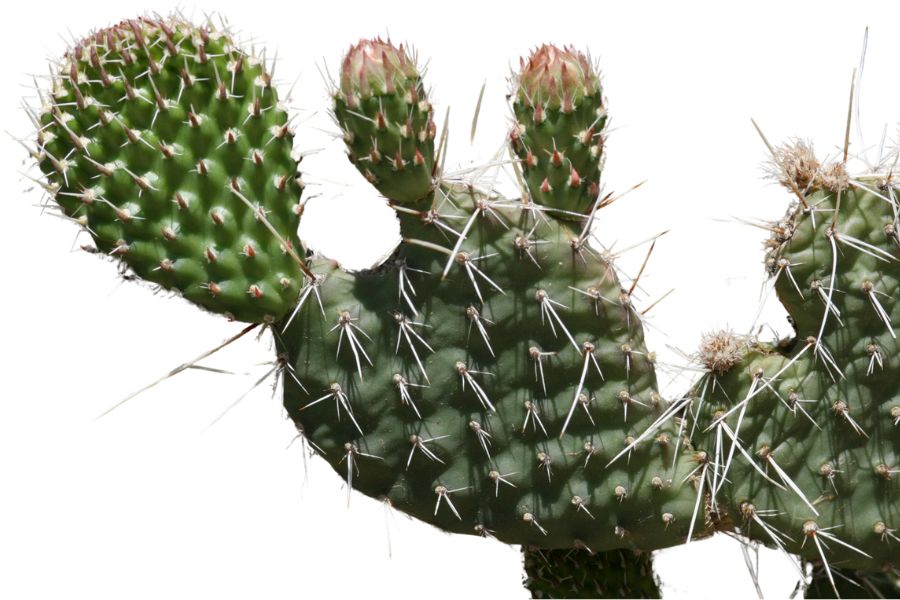Utah is home to a rich mix of edible wild plants, ranging from nutrient-dense greens to flavorful roots and berries. Wild mint grows in patches along water, while pricklypear cactus pads can be cooked down for a tart, meaty bite.
Each plant has its own best moment for harvesting, and the variety of edible types means there’s always something different in season.
Some edible species are hidden in plain sight, passed by every day without a second thought. Plants like tapertip onion or sunflower might be overlooked until someone shows you exactly what they are and how they’re used.
The real value of these wild foods isn’t just in their taste, but in knowing that they’re growing all around you.
Utah’s edible plant diversity doesn’t begin or end with a few berries or greens. With just a bit of observation, the landscape opens up into dozens of forageable options that most people miss entirely. Learning even a few of them can lead to harvesting a whole variety of useful wild ingredients.
What We Cover In This Article:
- The Edible Plants Found in the State
- Toxic Plants That Look Like Edible Plants
- How to Get the Best Results Foraging
- Where to Find Forageables in the State
- Peak Foraging Seasons
- The extensive local experience and understanding of our team
- Input from multiple local foragers and foraging groups
- The accessibility of the various locations
- Safety and potential hazards when collecting
- Private and public locations
- A desire to include locations for both experienced foragers and those who are just starting out
Using these weights we think we’ve put together the best list out there for just about any forager to be successful!
A Quick Reminder
Before we get into the specifics about where and how to find these plants and mushrooms, we want to be clear that before ingesting any wild plant or mushroom, it should be identified with 100% certainty as edible by someone qualified and experienced in mushroom and plant identification, such as a professional mycologist or an expert forager. Misidentification can lead to serious illness or death.
All plants and mushrooms have the potential to cause severe adverse reactions in certain individuals, even death. If you are consuming wild foragables, it is crucial to cook them thoroughly and properly and only eat a small portion to test for personal tolerance. Some people may have allergies or sensitivities to specific mushrooms and plants, even if they are considered safe for others.
The information provided in this article is for general informational and educational purposes only. Foraging involves inherent risks.
The Edible Plants Found in the State
Wild plants found across the state can add fresh, seasonal ingredients to your meals:
Chokecherry (Prunus virginiana)
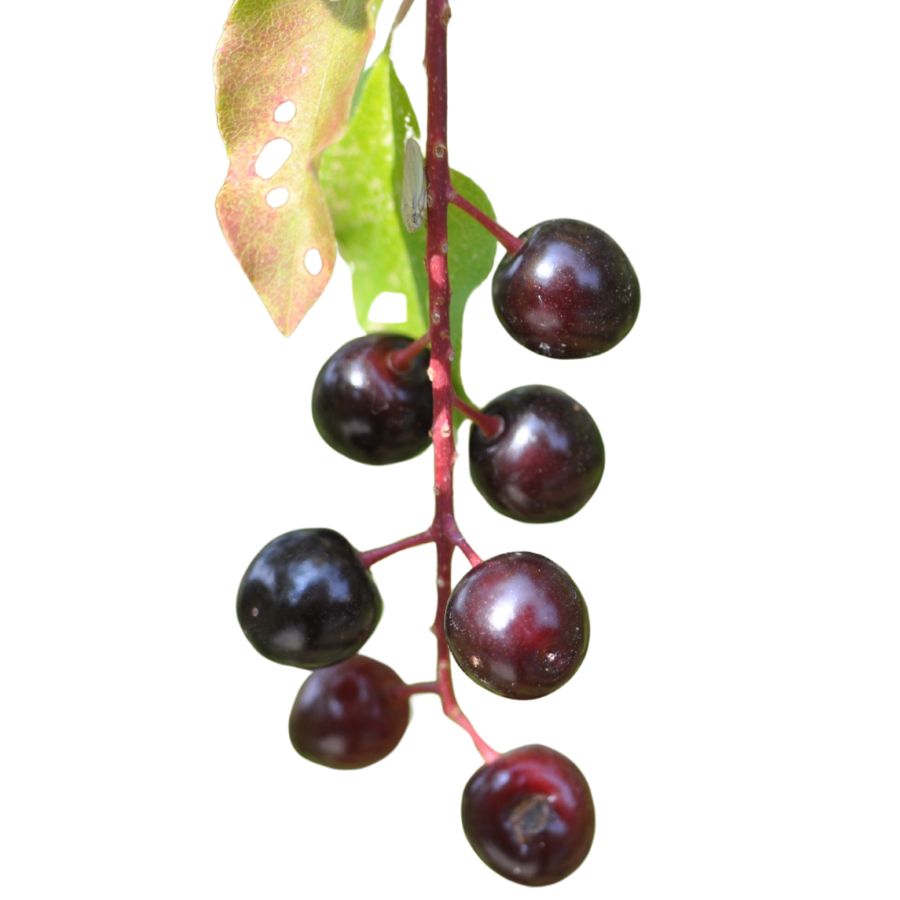
Clusters of dark berries hanging from a woody shrub usually indicate chokecherries, especially when the leaves are oval with finely toothed edges. These berries turn from red to deep purple or black when they’re ready to eat.
Chokecherries are rarely eaten raw due to their bitterness, but they shine in cooked recipes like preserves, sauces, or even homemade wine. Boiling the fruit and straining it helps separate the pulp from the inedible seeds.
It’s easy to mix up chokecherries with other wild cherries, but true chokecherries have longer, narrower leaves and a more astringent taste. Avoid anything with rounder, solitary berries or a sweet scent without the signature tartness.
Their texture is slightly gritty around the pit, and the flavor improves significantly with sugar and heat. A strong astringent quality dominates the raw berry, but the processed pulp becomes rich and deeply flavored.
Golden Currant (Ribes aureum)
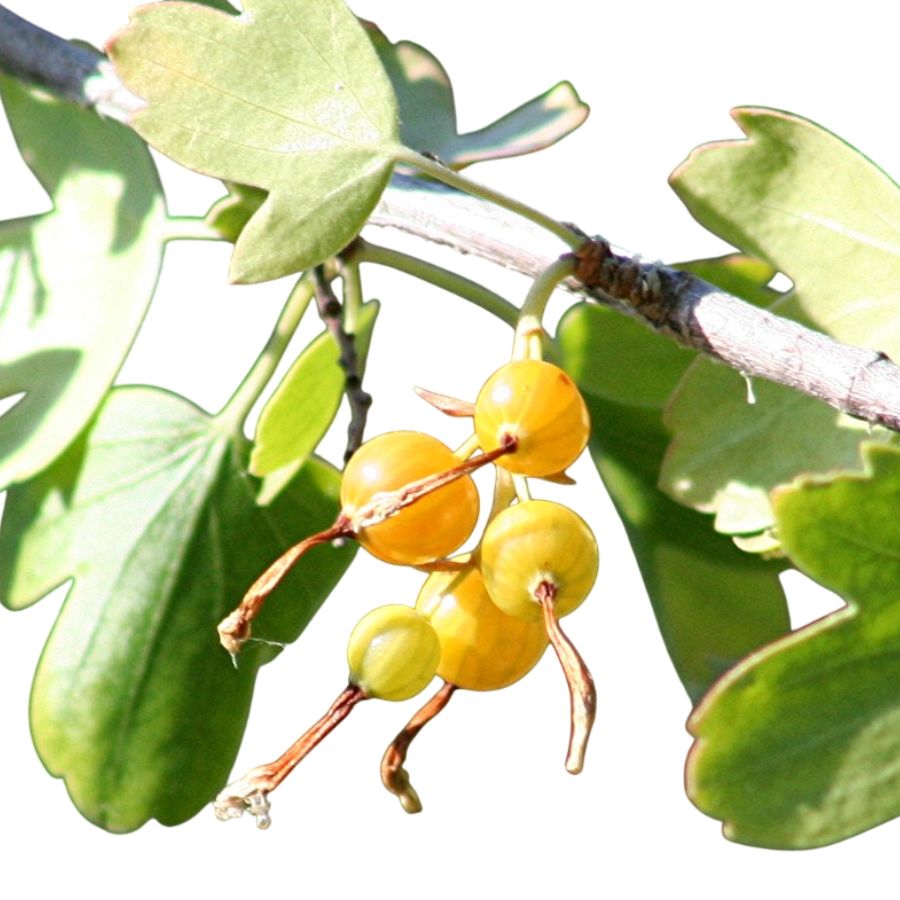
Golden currants produce small, round berries with smooth skin and a color range that includes golden yellow, red, and deep purple. Their flavor is tangy, slightly sweet, and develops a deeper complexity when cooked down.
The berries are edible raw, but you’ll probably want to use them in syrups, sauces, or dried into snacks. Some people dehydrate them like raisins, though they’re smaller and more tart.
Leaves are palmately lobed and lightly scented, which helps set golden currants apart from potentially toxic lookalikes like some ornamental currant hybrids. Those lookalikes often lack the same strong fragrance and have less pronounced lobing on the leaves.
Don’t eat the unripe berries in large amounts, as they can be harsh on the stomach. Fermenting the juice was a traditional method of preservation among various communities, adding a unique use to its culinary profile.
Colorado Pinyon (Pinus edulis)

Colorado pinyon gives you a dense, nutritious nut hidden inside sticky, pitch-covered cones. When shelled and roasted, the nut has a mild sweetness and a soft, oily bite that makes it ideal for both snacking and cooking.
You might confuse it with other high-desert pines, but remember: Colorado pinyon has two short, curved needles per bundle. Trees with three or more needles are from different species and often produce bitter or useless seeds.
The edible part is only the inner seed, not the shell or cone, which are too tough and sappy to use. Some folks grind the roasted seeds into a spread or mix them with cornmeal for a protein-rich dough.
While safe to eat in moderate amounts, eating large volumes raw can cause digestive issues because of the resin content. And if you collect cones early, be ready for sticky fingers—the pitch is no joke.
Plains Pricklypear Cactus (Opuntia polyacantha)
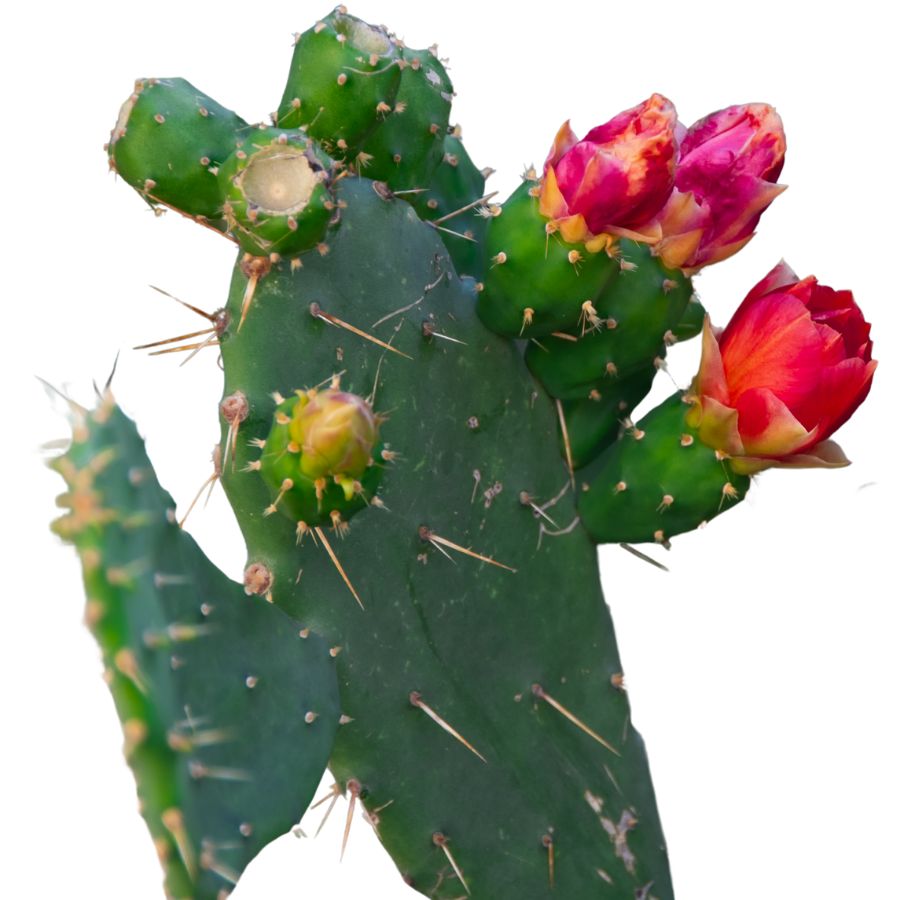
You’ll find the plains pricklypear cactus growing in open, arid terrain, its sprawling pads covered in sharp spines and tiny hair-like glochids. The fruit, which ripens into a deep reddish or purple hue, is edible once you peel off the outer layer and remove any remaining glochids.
The pulp inside is sweet and slightly tangy, though the seeds are hard and usually swallowed whole or spat out. People use the fruit to make jelly, syrup, or juice once it’s been properly cleaned.
The pads are also edible if harvested young, skinned carefully, and cooked; they have a vegetal flavor and a slippery texture when sautéed or boiled. Nopales are often used in soups or grilled whole with a squeeze of lime.
Be careful not to confuse this with less palatable cacti, like the twisted-spine cactus, which has a different pad structure and unpleasant bitterness. Always wear gloves and use a knife or flame to get rid of the glochids before handling or eating any part.
Woods’ Rose (Rosa woodsii)
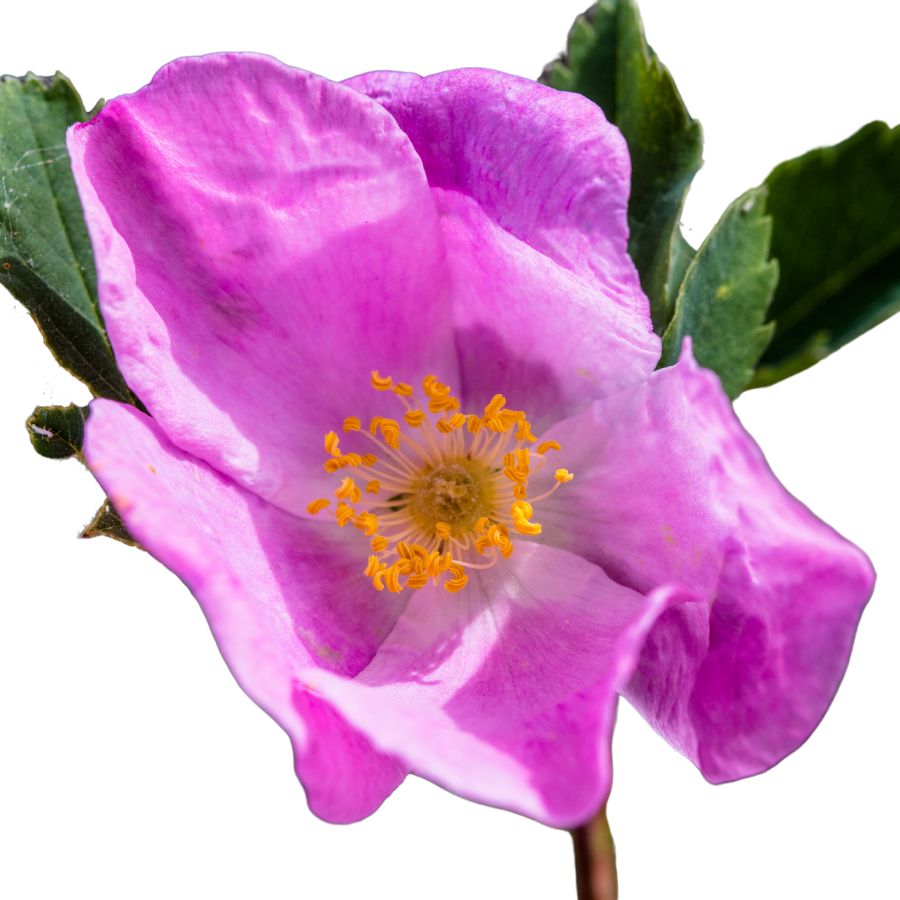
Woods’ rose, also referred to as wild rose or western wild rose, grows as a shrub with pink to deep rose-colored blooms and curved prickles along its stem. Its red-orange hips are round or slightly oval and ripen fully to a firm, leathery texture.
You can eat the hips raw after removing the seeds and tiny hairs, but they’re more palatable when cooked into sauces, used in baked goods, or dried for tea. The flavor is tart, similar to crabapple, and the flesh is dense and chewy when dried.
Rose petals from this plant are also edible and can be eaten fresh or used to flavor vinegars and desserts. Be cautious around rose lookalikes like Japanese rose, which produces similar hips but often has more rigid stems and smoother leaves.
Never ingest the stems or roots—those parts have no food value and can irritate your digestive tract. The hips were used in some traditional food preparations for their nutritional benefits, especially during food-scarce times.
Cattail (Typha latifolia)
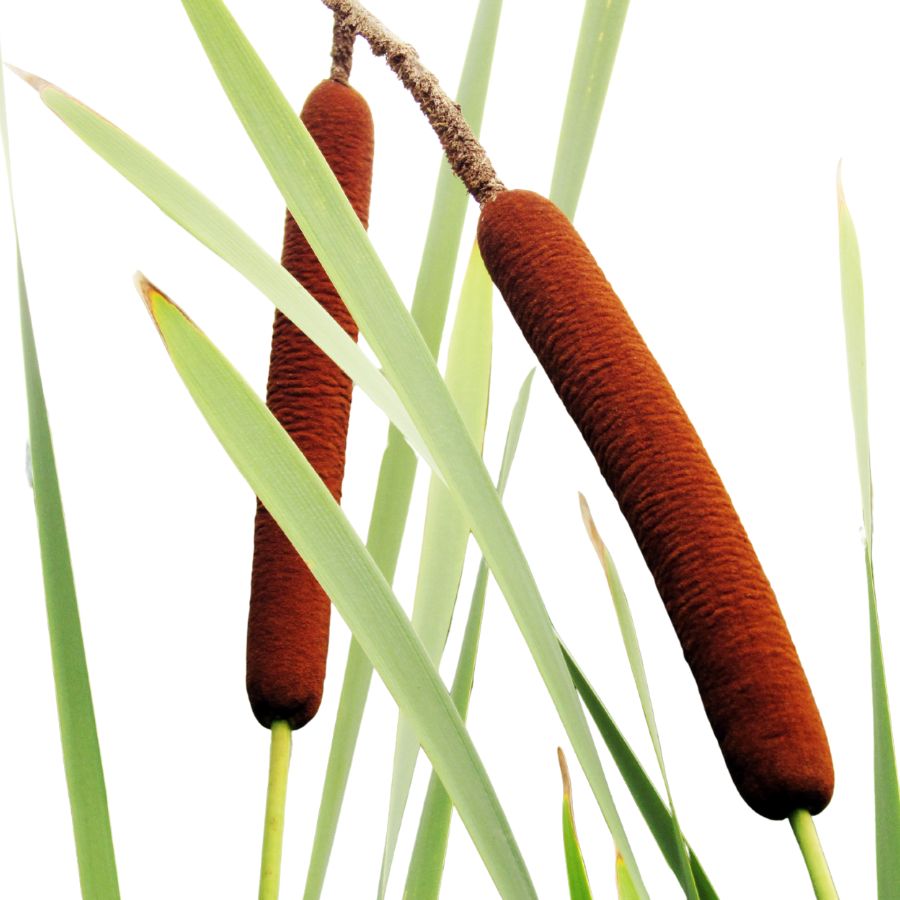
Cattails, often called bulrushes or corn dog grass, are easy to spot with their tall green stalks and brown, sausage-shaped flower heads. They grow thickly along the edges of ponds, lakes, and marshes, forming dense stands that are hard to miss.
Almost every part of the cattail is edible, including the young shoots, flower heads, and starchy rhizomes. You can eat the tender shoots raw, boil the flower heads like corn on the cob, or grind the rhizomes into flour for baking.
Besides food, cattails have long been used for making mats, baskets, and even insulation by weaving the dried leaves and using the fluffy seeds. Their combination of usefulness and abundance has made them an important survival plant for many cultures.
One thing you need to watch for is young cattail shoots being confused with similar-looking plants like iris, which are toxic. A real cattail shoot will have a mild cucumber-like smell when you snap it open, while iris plants smell bitter or unpleasant.
Tapertip Onion (Allium acuminatum)
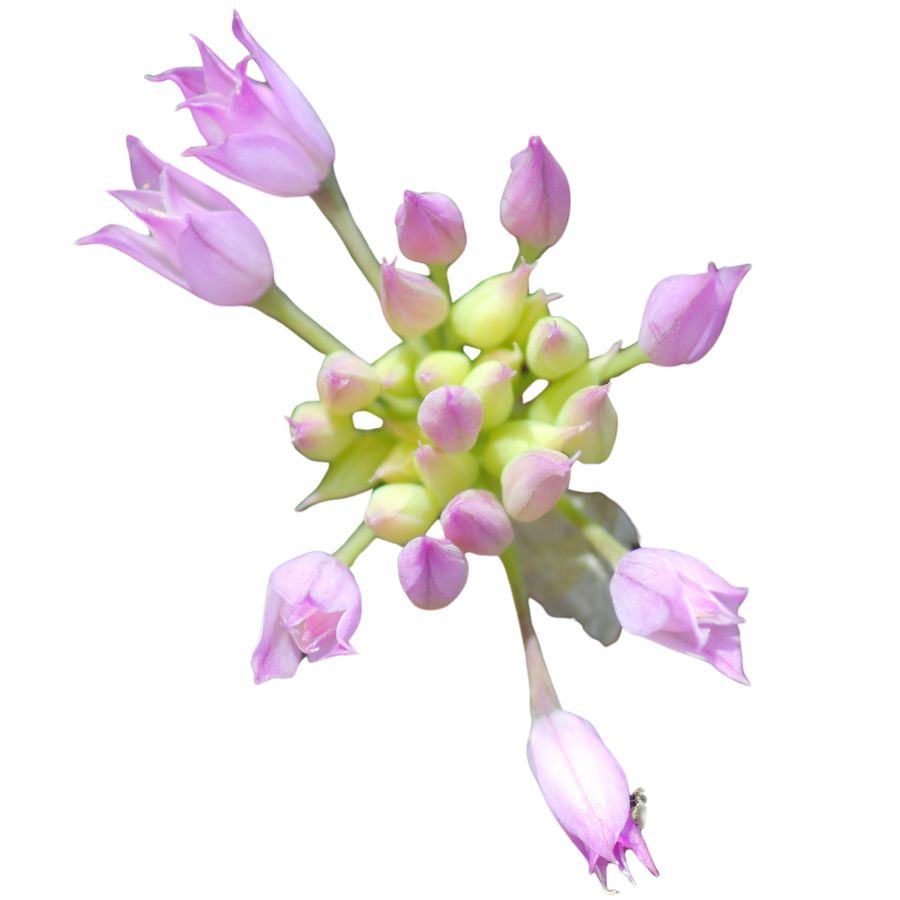
The tapertip onion grows in clusters and sends up slender, grasslike leaves with a strong onion scent. You can eat both the bulb and the leaves, though the bulb is where the strongest flavor lives.
Its flavor is sharp, savory, and distinctly garlicky when raw, mellowing into something sweeter when roasted. The bulbs look like miniature shallots and can be sautéed whole, chopped into stews, or pickled.
A few wild onions can resemble death camas, a toxic plant with similar leaves but no onion smell and white flowers arranged differently. Always crush a leaf and sniff for the familiar onion odor to help avoid confusion.
You don’t need to peel the small bulbs before cooking, but they benefit from a rinse to remove grit. Tapertip onion is especially good roasted whole in foil with a bit of salt.
Stinging Nettle (Urtica dioica)
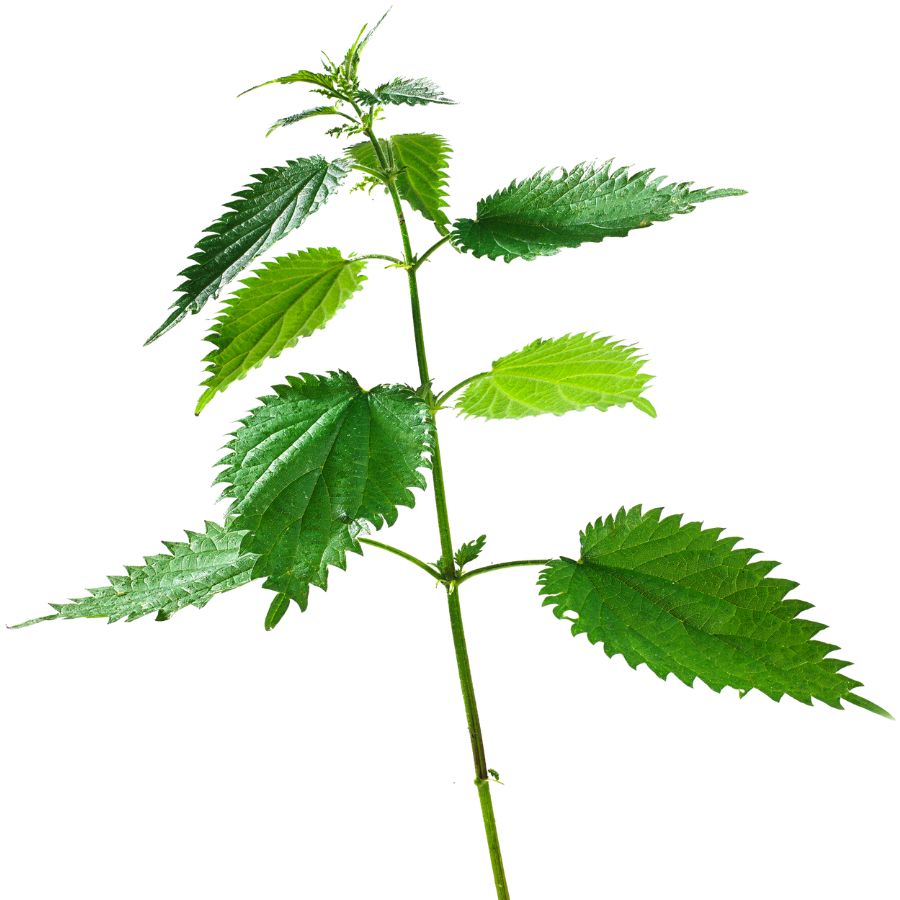
Stinging nettle is also known as burn weed or devil leaf, and it definitely earns those names. The tiny hairs on its leaves and stems can leave a painful, tingling rash if you brush against it raw, so always wear gloves when handling it.
Once it’s cooked or dried, those stingers lose their punch, and the leaves turn mild and slightly earthy in flavor. The texture softens too, making it a solid substitute for spinach in soups, pastas, or even as a simple sauté.
The young leaves and tender tops are what you want to collect. Avoid the tough lower stems and older leaves, which can be gritty or unpleasant to chew.
Some people confuse stinging nettle with purple deadnettle or henbit, but those don’t sting and have more rounded, fuzzy leaves. If the plant doesn’t make your skin react, it’s not stinging nettle.
Lamb’s Quarters (Chenopodium album)
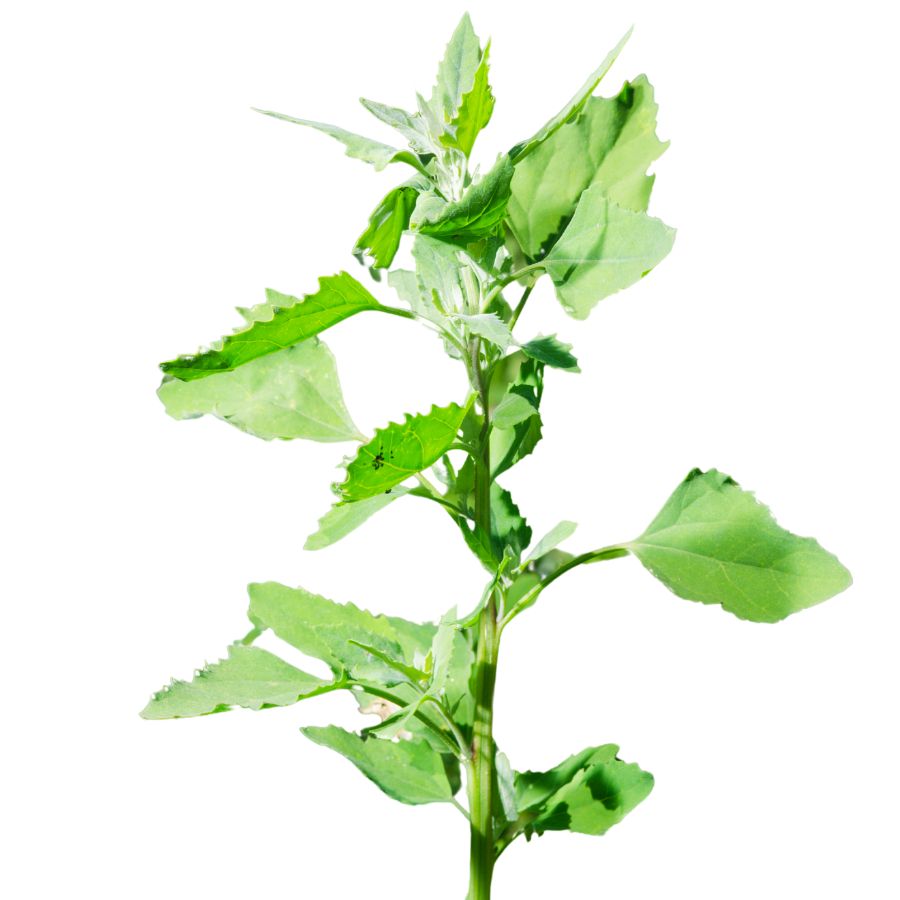
Lamb’s quarters, also called wild spinach and pigweed, has soft green leaves that often look dusted with a white, powdery coating. The leaves are shaped a little like goose feet, with slightly jagged edges and a smooth underside that feels almost velvety when you touch it.
A few plants can be confused with lamb’s quarters, like some types of nightshade, but true lamb’s quarters never have berries and its leaves are usually coated in that distinctive white bloom. Always check that the stems are grooved and not round and smooth like the poisonous lookalikes.
When you taste lamb’s quarters, you will notice it has a mild, slightly nutty flavor that gets richer when cooked. The young leaves, tender stems, and even the seeds are all edible, but you should avoid eating the older stems because they become tough and stringy.
People often sauté lamb’s quarters like spinach, blend it into smoothies, or dry the leaves for later use in soups and stews. It is also rich in oxalates, so you will want to cook it before eating large amounts to avoid any problems.
Purslane (Portulaca oleracea)
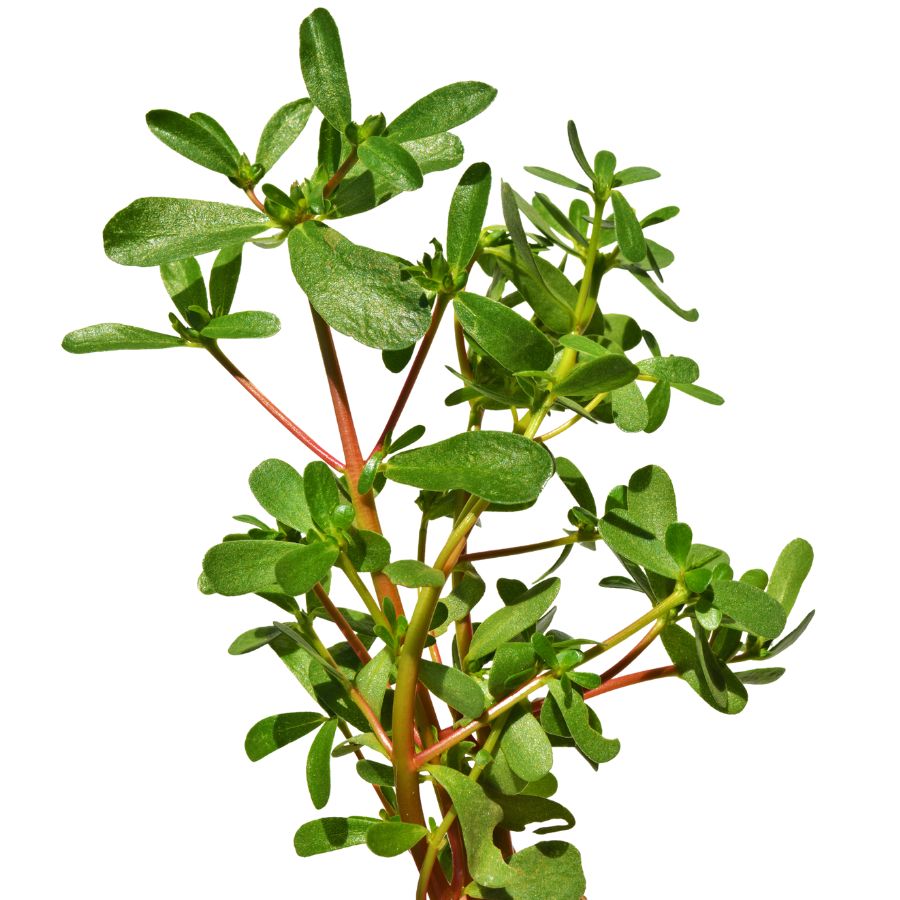
Purslane is a hardy, low-growing plant that’s also sometimes known as little hogweed or verdolaga. It has smooth, reddish stems and thick, paddle-shaped leaves that feel a bit waxy when you touch them.
The stems, leaves, and tiny yellow flowers are all edible, while the roots are not typically eaten. Purslane has a crisp texture with a slightly tart, lemony flavor that works well raw or cooked.
Some plants that look similar include spurge, which has a milky sap and is not edible, so it is important to check for purslane’s smooth, succulent stems and lack of sap. Always double-check by gently snapping a stem to make sure no white liquid appears.
You can toss fresh purslane into salads, sauté it lightly like spinach, or pickle it for later use. Its mild tartness and slight crunch make it a refreshing addition to sandwiches, soups, and even stir-fries.
Fireweed (Chamerion angustifolium)
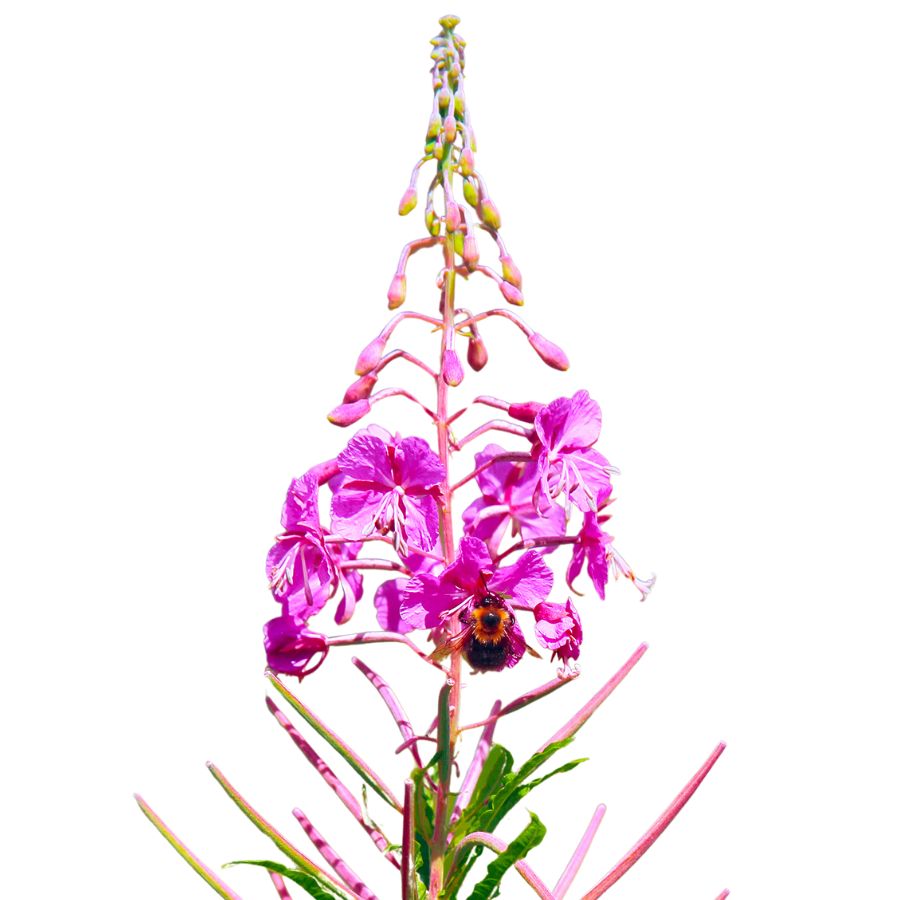
Fireweed produces a spike of bright fuchsia flowers and grows in tall, narrow stands with alternating leaves that taper to a point. The stem often has a reddish hue and a soft fuzz that runs along its surface.
The inner pith of mature stalks is edible and has a faintly sweet flavor, especially when eaten raw. Early shoots can be treated like asparagus—grilled, steamed, or added to stir-fries.
While the plant is generally safe, be cautious not to gather it near roadsides or areas that have been sprayed, as the plant readily colonizes disturbed ground. Fireweed does have a few lookalikes, but most lack the flower’s distinct four-petal shape and central tufted stigma.
The blossoms are sometimes added raw to fruit dishes or frozen into ice cubes for color, and the leaves can be dried and used as a tea substitute. Stick to the younger parts if you want the best texture and flavor.
Arrowleaf Balsamroot (Balsamorhiza sagittata)
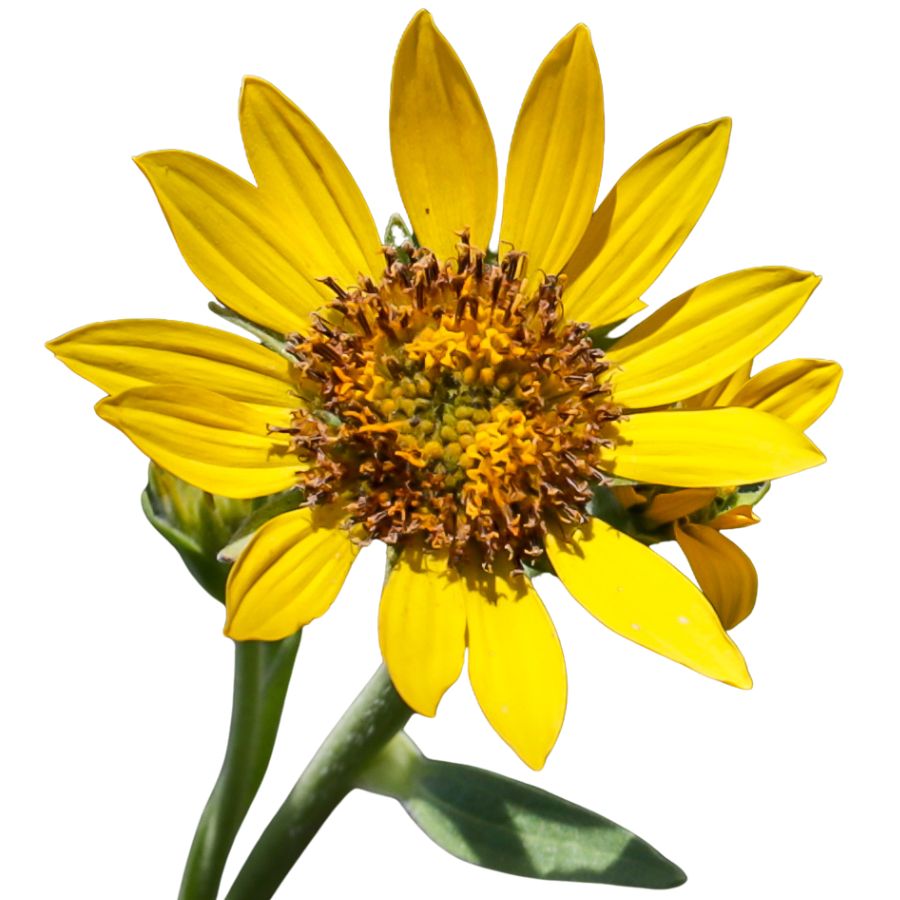
If you break open the root of arrowleaf balsamroot, the strong, piney smell is the first thing you’ll notice. That scent alone is a good way to tell it apart from lookalikes like mule’s ears, which lack the resinous aroma and have smoother leaves.
The root, leaves, and seeds of the of arrowleaf balsamroot are all edible, though the root is usually cooked to mellow its sharp, medicinal flavor. The young leaves are better raw than older ones, which get tough and bitter.
Its flower resembles a small sunflower, with bright yellow rays and a center that matures into edible seeds. The thick leaves grow low to the ground and are covered in fine hairs that give them a soft texture.
You can roast or steam the root, or even dry it and grind it down for flour in a pinch. The flavor isn’t for everyone, but when prepared right, it adds an earthy depth to stews and soups.
Wild Bergamot (Monarda fistulosa)
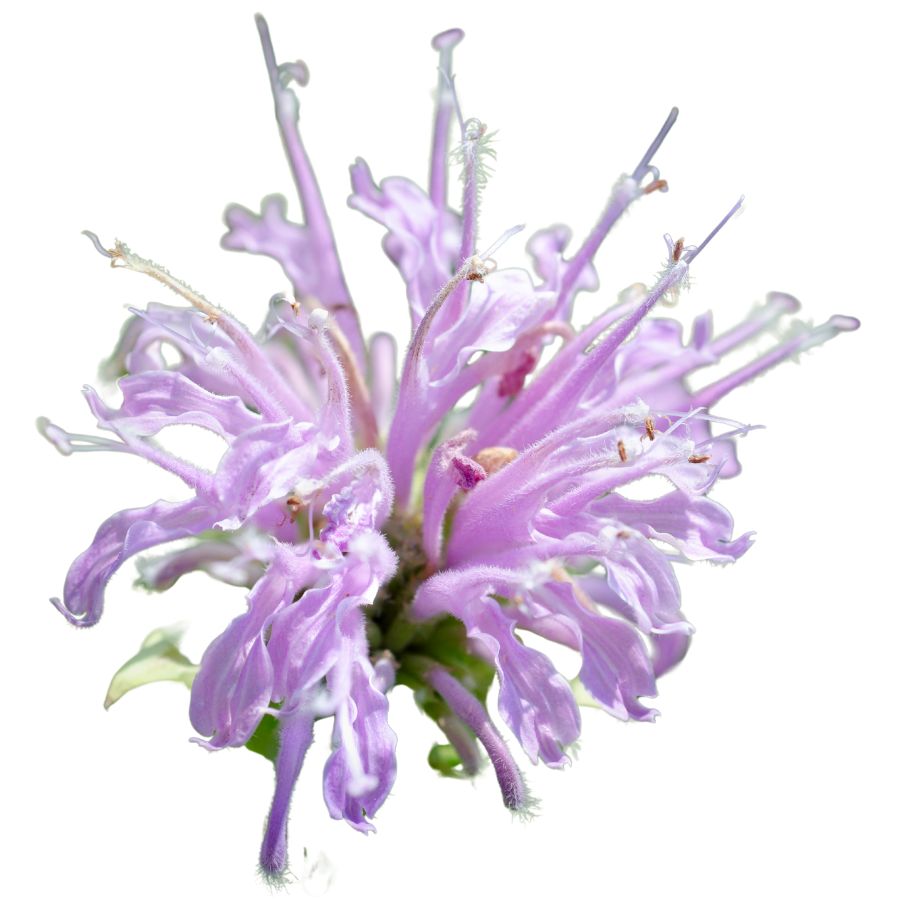
Wild bergamot has clusters of lavender-colored flowers and opposite leaves that smell like thyme when crushed. Its flavor leans herbal and minty, with a little bitterness that works well in marinades.
The flower heads are shaggy and irregular, and the plant’s square stem helps tell it apart from lookalikes like spotted horsemint.
In recipes, it’s most often dried and steeped or blended into herb mixes.
Both leaves and petals can be eaten, though most people avoid the stems. Don’t eat it in large amounts raw—it’s strong and can be overpowering.
It’s related to mint, and that shows in how fast the flavor develops when heat is applied. You’ll get the most aroma if you bruise the leaves before using them.
Indian Ricegrass (Achnatherum hymenoides)
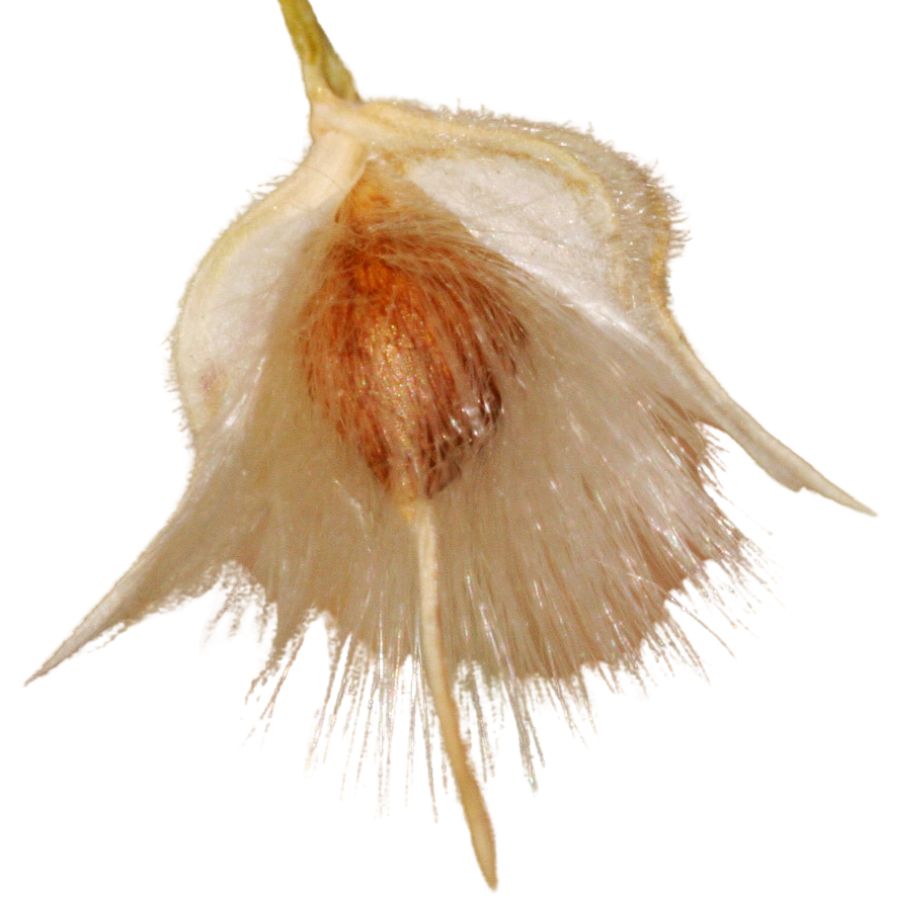
Indian ricegrass is a bunchgrass with fine, narrow leaves and tall, wiry stems topped by open, airy seed heads. The seeds are the edible part, and they’re small, dark, and slightly shiny when mature.
You can grind the seeds into a gluten-free flour with a nutty flavor and soft, slightly chewy texture when cooked. It’s often used in flatbreads, porridge, or just roasted and eaten as a snack.
Its seeds resemble those of needle-and-thread grass, but the latter has long, twisting awns that make it inedible and potentially irritating if ingested. Indian ricegrass lacks those sharp, barbed extensions.
There’s nothing edible about the leaves or stems, and the plant is mostly harvested for its seeds. It was once a staple grain for many Indigenous communities and is now gaining renewed attention for its nutritional value.
Wild Mint (Mentha arvensis)

You’re probably familiar with the strong scent of wild mint, which comes from the essential oils concentrated in its leaves. It has square stems, lance-shaped leaves with slightly toothed edges, and pale lilac flower clusters.
The fresh leaves can be eaten raw, cooked into soups, or muddled into drinks for a crisp flavor. Expect a bright, menthol-like kick with a hint of sweetness.
False mint species like purple deadnettle grow in similar spots but lack the menthol smell and have fuzzy leaves. If the plant doesn’t smell like mint, it probably isn’t.
Stick to the leaves and younger stems for eating because the woody stalks aren’t palatable. Wild mint also holds up well when dried and stored for tea or seasoning.
Sunflower (Helianthus annuus)
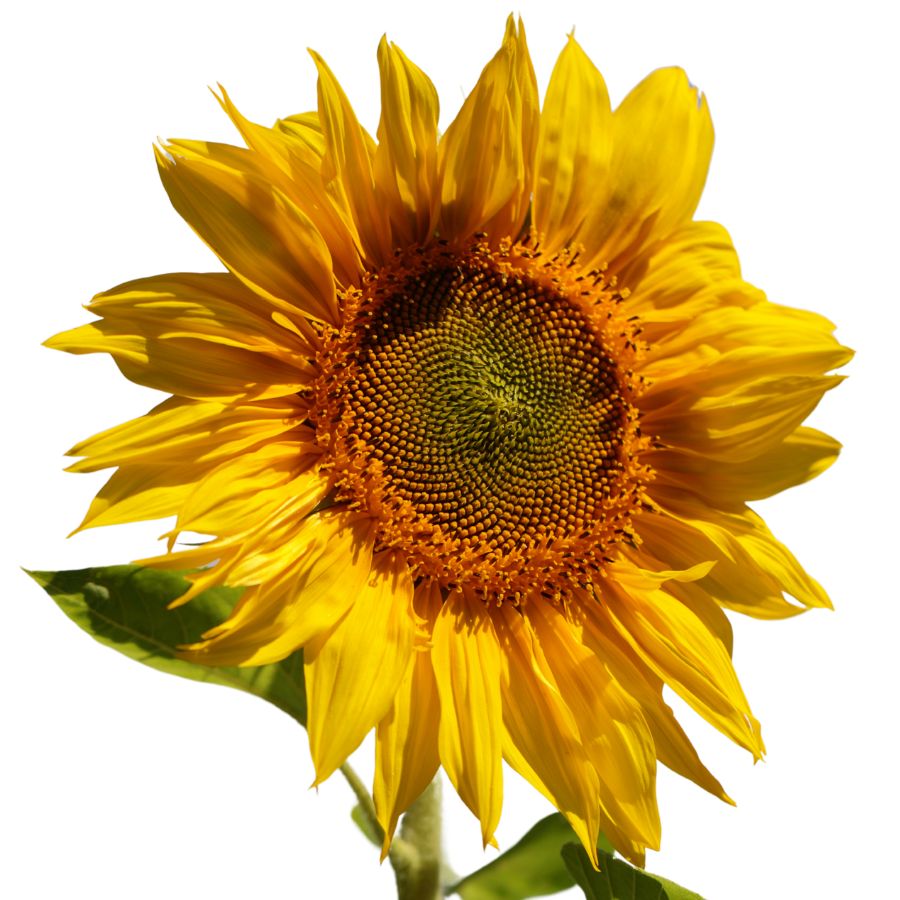
Sunflowers have a thick, rough stem and large, broad leaves with a slightly sandpapery texture. The huge circular flower head is made up of bright yellow petals surrounding a dark center packed with seeds.
The seeds inside the flower head are edible once they mature, and you can eat them raw, roasted, or ground into meal. The young flower buds are also edible and can be steamed or sautéed like an artichoke.
When gathering sunflower seeds, make sure not to confuse the plant with certain types of wild composites that have smaller flowers and thin, spindly stalks. True sunflowers always have a thick, sturdy stem and a flower head that can be as wide as a dinner plate.
Sunflower seeds have a mild, nutty flavor and a tender crunch when fresh. You can also press the seeds for oil or sprout them for a nutritious snack.
Yellow Salsify (Tragopogon dubius)
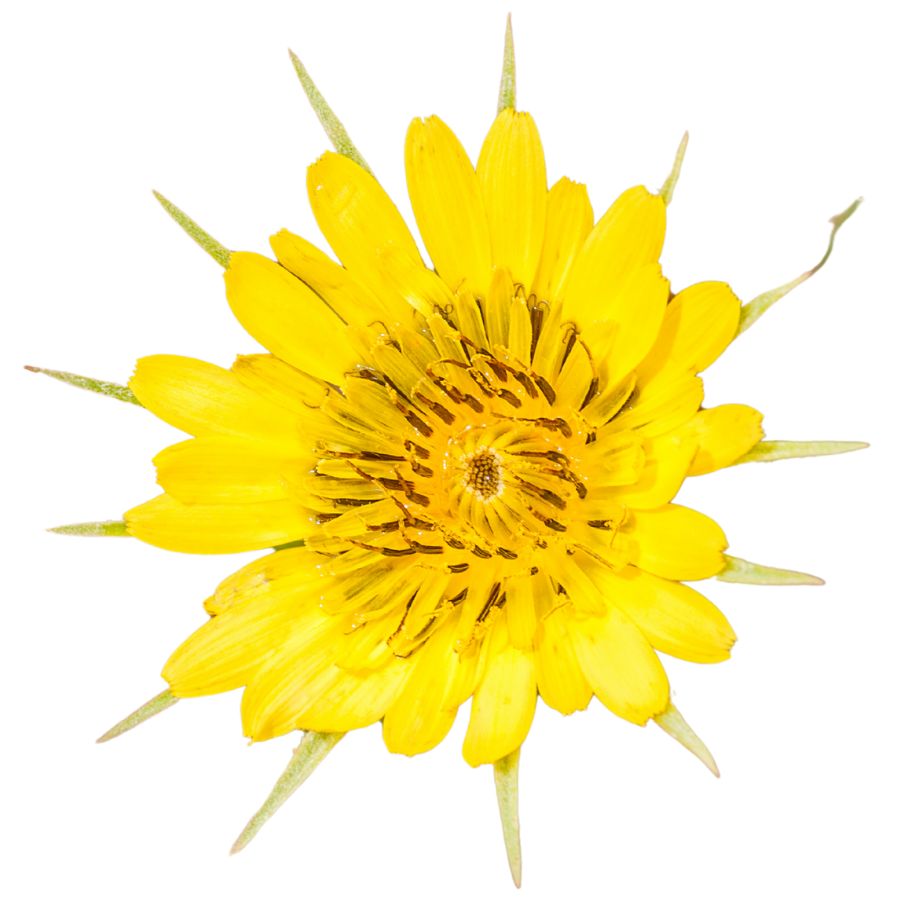
Yellow salsify has a large puffball seed head that resembles a dandelion but is much bigger, and its flower has sharp, pointed petals. You’ll usually see a single stem with long, narrow leaves that run directly along the stalk without branching.
The thick taproot is the main edible part and is often peeled and cooked like a vegetable—its flavor is mild with a hint of oyster and nuttiness. Some people ferment or pickle the root to preserve it.
You can also eat the flower buds before they open, and the stems can be peeled and steamed for a tender, slightly sweet bite. The root becomes stringy if you let it age too long before harvesting.
Don’t confuse it with wild lettuce or sow thistle, which have similar leaves but don’t form the same large spherical seed head and usually grow more branched stems. Unlike those, yellow salsify has a distinct single flower per stem and smoother, less bitter leaves.
Common Evening Primrose (Oenothera biennis)
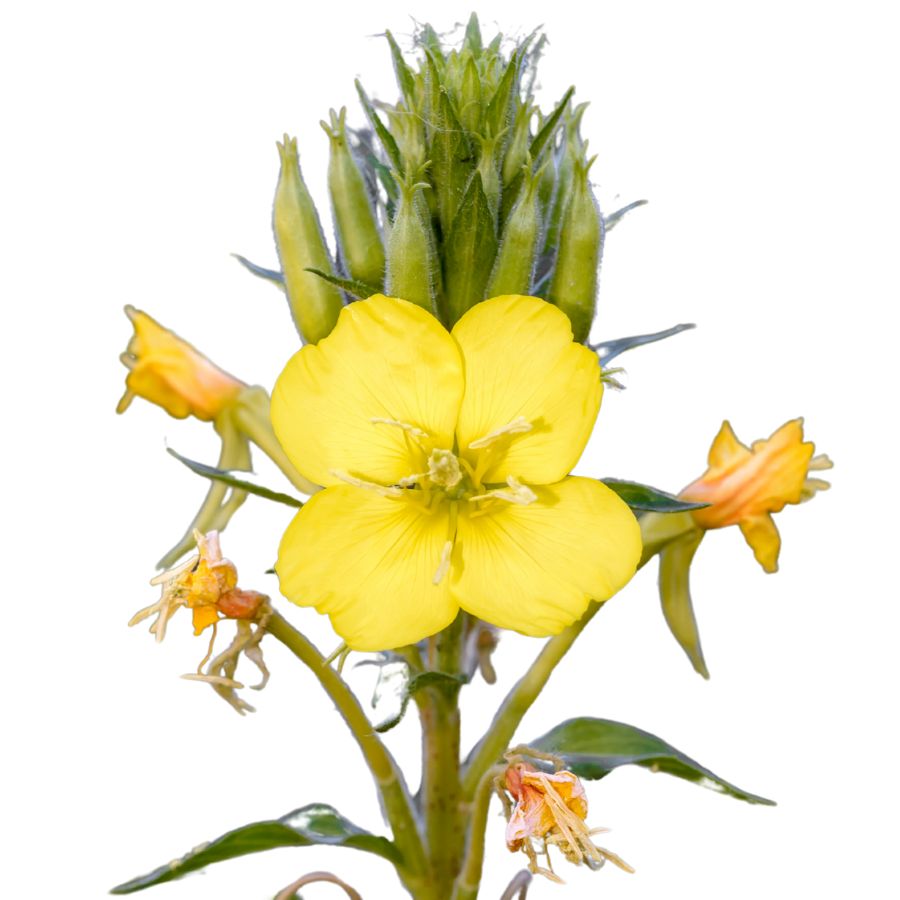
The bright yellow blooms of common evening primrose, or hog weed as it’s also called, only open in low light and tend to wilt by morning. It has a coarse stem and elongated leaves that spiral upward, with buds that cluster near the top.
Its root has a taste similar to salsify and works well roasted or baked. Flower buds and young leaves are sometimes boiled like spinach to reduce bitterness.
Some parts of the plant resemble helenium, which is not safe to eat—helenium leaves are narrower and more aromatic when crushed. The seeds of common evening primrose can be ground into a paste or flour-like mix for cooking.
Though many parts of the plant are used in food, the flower stalks get tough quickly and aren’t usually eaten. Stick with the first-year roots and early foliage for better flavor and texture.
Common Groundcherry (Physalis longifolia)
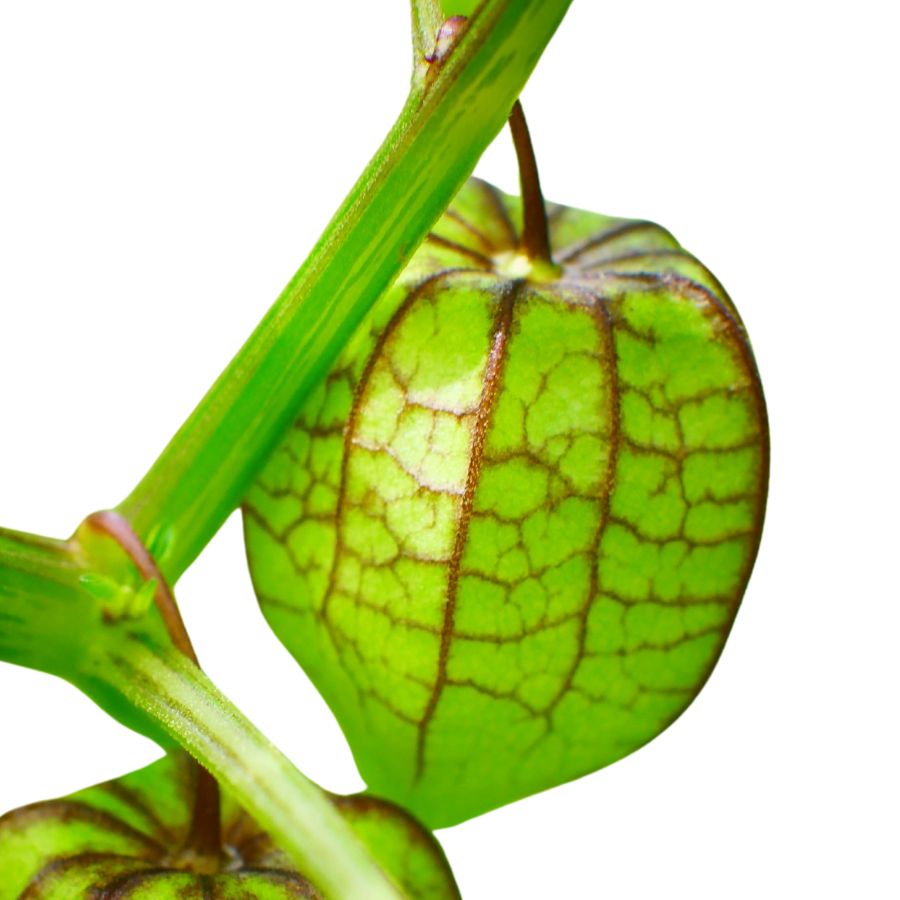
The fruit of the common groundcherry grows inside a papery husk that looks like a delicate lantern. This edible part is sweet, with a texture similar to a firm grape and a flavor that hints at pineapple and tomato.
Some wild nightshades look similar, but they don’t have that telltale husk and their berries are often darker and shinier. Don’t eat anything that lacks the husk or has a bitter or soapy aftertaste.
You can eat groundcherries raw, but they’re also excellent in pies, jams, and salsas thanks to their bright, tangy flavor. Just make sure the berries are fully ripe and golden—unripe ones can be mildly toxic.
The plant itself has slightly hairy leaves and spreads low to the ground, often growing in loose clusters. Only the fruit is edible; avoid the leaves, stems, and green berries, as they contain solanine.
Oregon Grape (Mahonia repens)
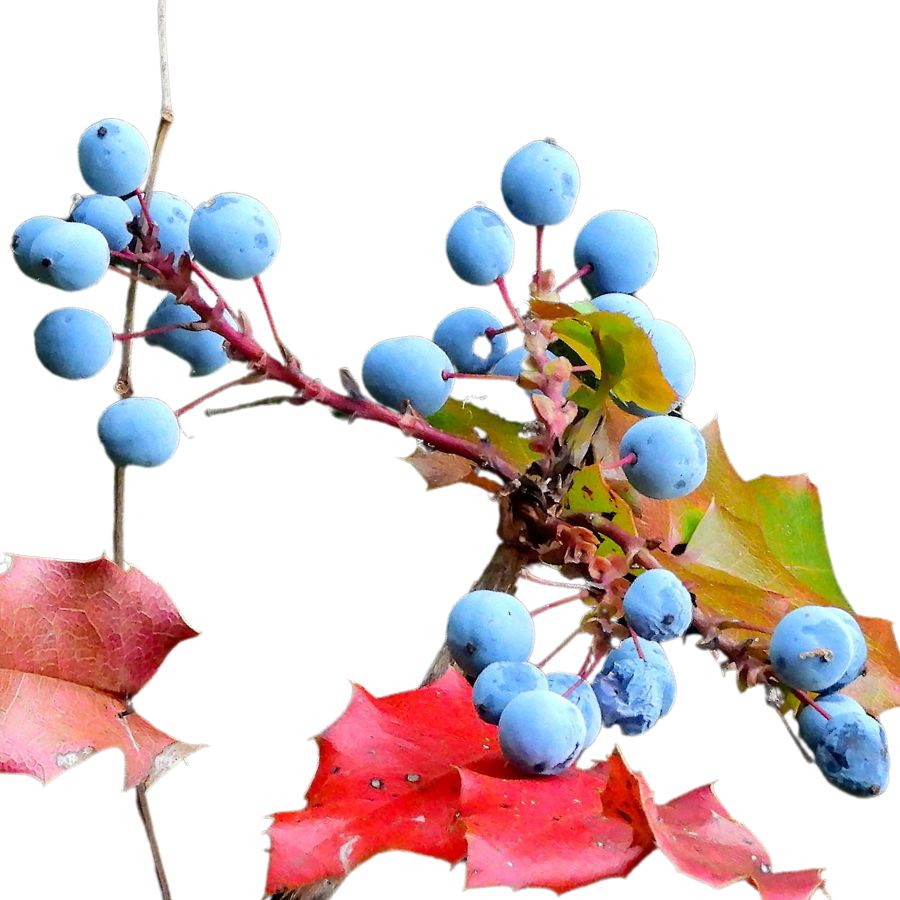
You’re looking at Oregon grape when you find leathery, pointed leaves and dusty purple berries clinging to woody stems close to the ground. The berries are edible but intensely sour and best used in cooked preparations.
Some people turn them into jellies or juice, while others blend them with sweeter fruits in syrups or compotes. The thick skin and bitter flesh mean most people don’t snack on them raw.
Oregon grape is occasionally mistaken for some types of barberry, but barberries are more elongated and often brighter red. The leaf shape is a quick giveaway—Oregon grape has broader, spiny leaflets in a rosette pattern.
Don’t try using the roots or stems in food; only the berries are safe to eat. With a strong tannic edge, the flavor holds up well to heat and sugar, especially in long-simmered recipes.
Toxic Plants That Look Like Edible Plants
There are plenty of wild edibles to choose from, but some toxic native plants closely resemble them. Mistaking the wrong one can lead to severe illness or even death, so it’s important to know exactly what you’re picking.
Poison Hemlock (Conium maculatum)
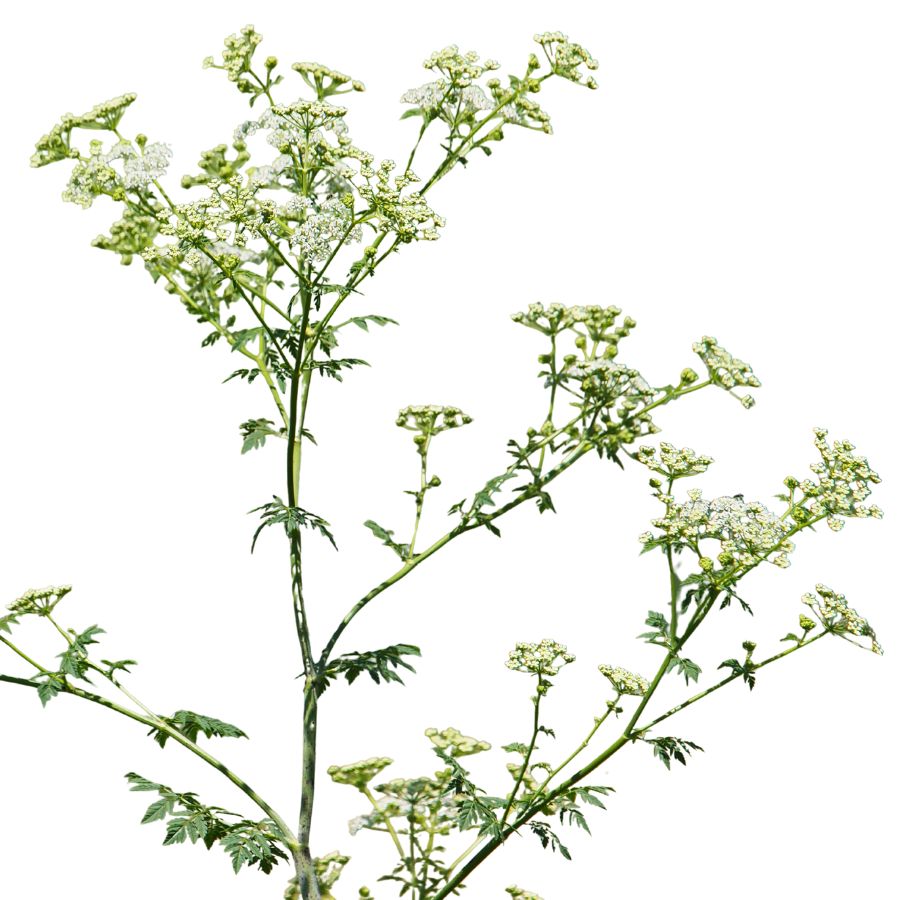
Often mistaken for: Wild carrot (Daucus carota)
Poison hemlock is a tall plant with lacy leaves and umbrella-like clusters of tiny white flowers. It has smooth, hollow stems with purple blotches and grows in sunny places like roadsides, meadows, and stream banks.
Unlike wild carrot, which has hairy stems and a dark central floret, poison hemlock has a musty odor and no flower center spot. It’s extremely toxic; just a small amount can be fatal, and even touching the sap can irritate the skin.
Water Hemlock (Cicuta spp.)
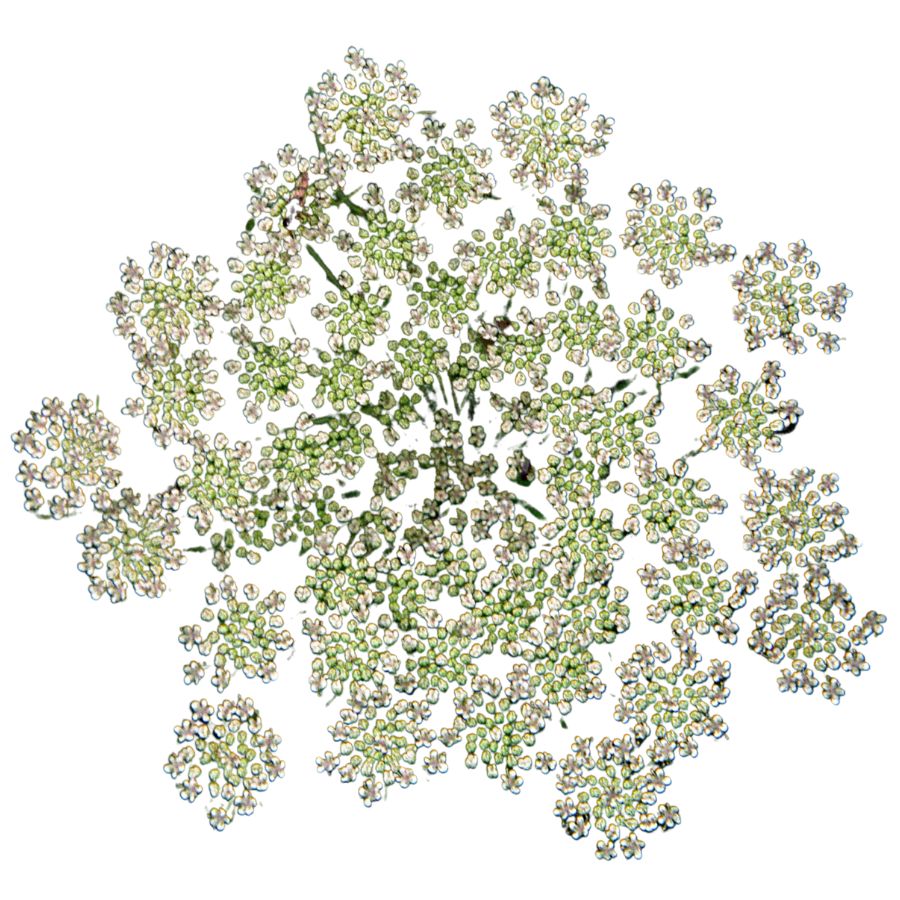
Often mistaken for: Wild parsnip (Pastinaca sativa) or wild celery (Apium spp.)
Water hemlock is a tall, branching plant with umbrella-shaped clusters of small white flowers. It grows in wet places like stream banks, marshes, and ditches, with stems that often show purple streaks or spots.
It can be confused with wild parsnip or wild celery, but its thick, hollow roots have internal chambers and release a yellow, foul-smelling sap when cut. Water hemlock is the most toxic plant in North America, and just a small amount can cause seizures, respiratory failure, and death.
False Hellebore (Veratrum viride)
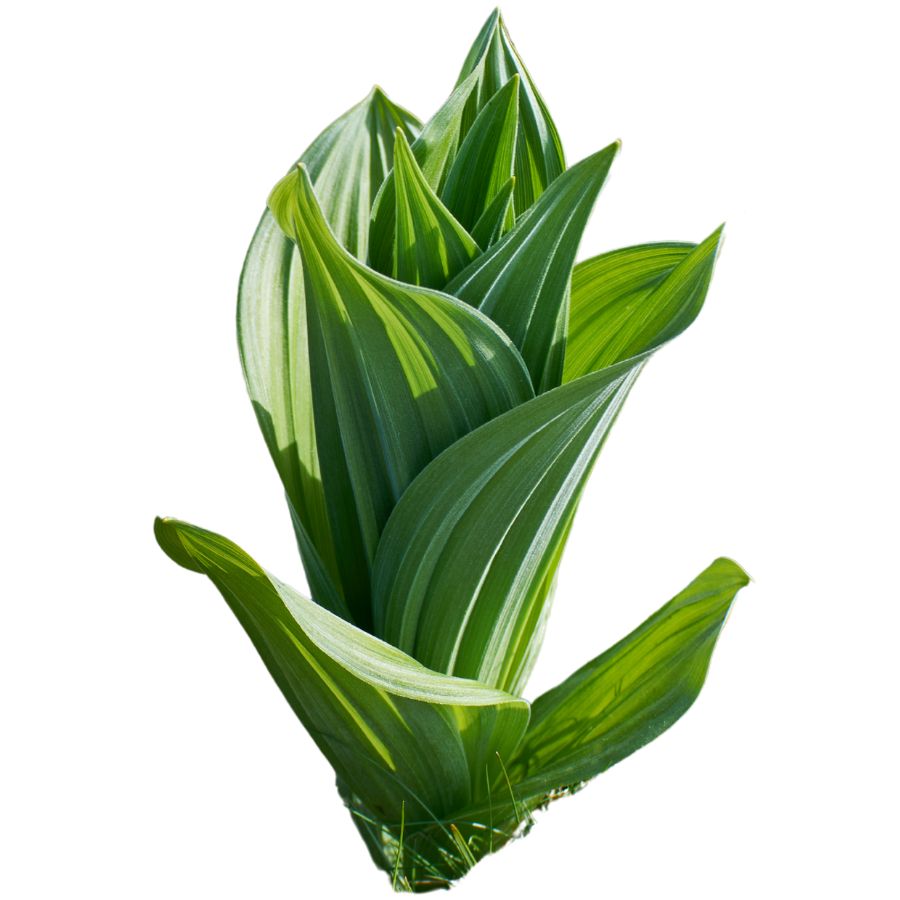
Often mistaken for: Ramps (Allium tricoccum)
False hellebore is a tall plant with broad, pleated green leaves that grow in a spiral from the base, often appearing early in spring. It grows in moist woods, meadows, and along streams.
It’s commonly mistaken for ramps, but ramps have a strong onion or garlic smell, while false hellebore is odorless and later grows a tall flower stalk. The plant is highly toxic, and eating any part can cause nausea, a slowed heart rate, and even death due to its alkaloids that affect the nervous and cardiovascular systems.
Death Camas (Zigadenus spp.)
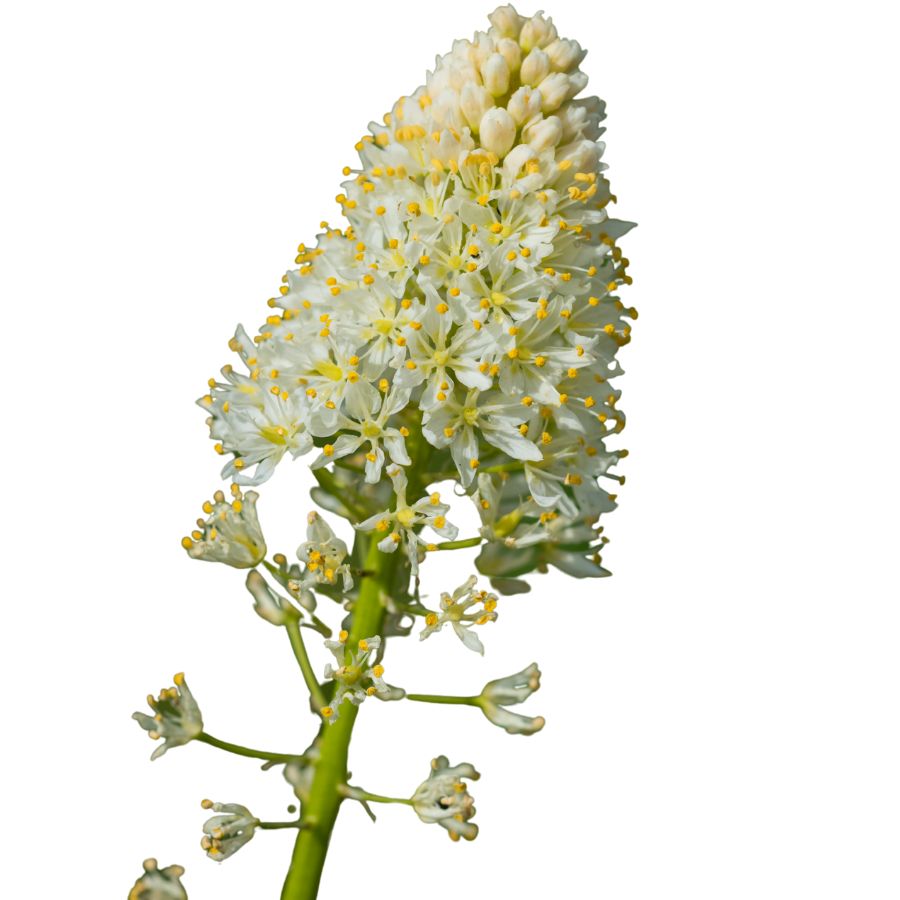
Often mistaken for: Wild onion or wild garlic (Allium spp.)
Death camas is a slender, grass-like plant that grows from underground bulbs and is found in open woods, meadows, and grassy hillsides. It has small, cream-colored flowers in loose clusters atop a tall stalk.
It’s often confused with wild onion or wild garlic due to their similar narrow leaves and habitats, but only Allium plants have a strong onion or garlic scent, while death camas has none. The plant is extremely poisonous, especially the bulbs, and even a small amount can cause nausea, vomiting, a slowed heartbeat, and potentially fatal respiratory failure.
Buckthorn Berries (Rhamnus spp.)
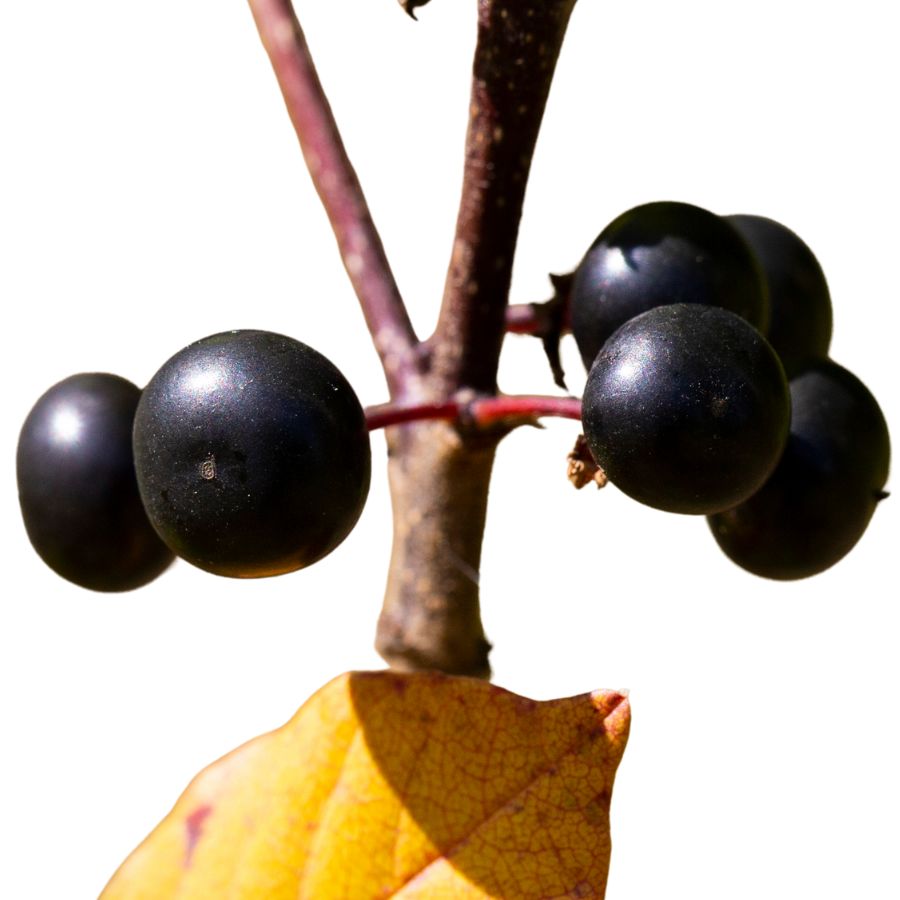
Often mistaken for: Elderberries (Sambucus spp.)
Buckthorn is a shrub or small tree often found along woodland edges, roadsides, and disturbed areas. It produces small, round berries that ripen to dark purple or black and usually grow in loose clusters.
These berries are sometimes mistaken for elderberries and other wild fruits, which also grow in dark clusters, but elderberries form flat-topped clusters on reddish stems while buckthorn berries are more scattered. Buckthorn berries are unsafe to eat as they contain compounds that can cause cramping, vomiting, and diarrhea, and large amounts may lead to dehydration and serious digestive problems.
Mayapple (Podophyllum peltatum)
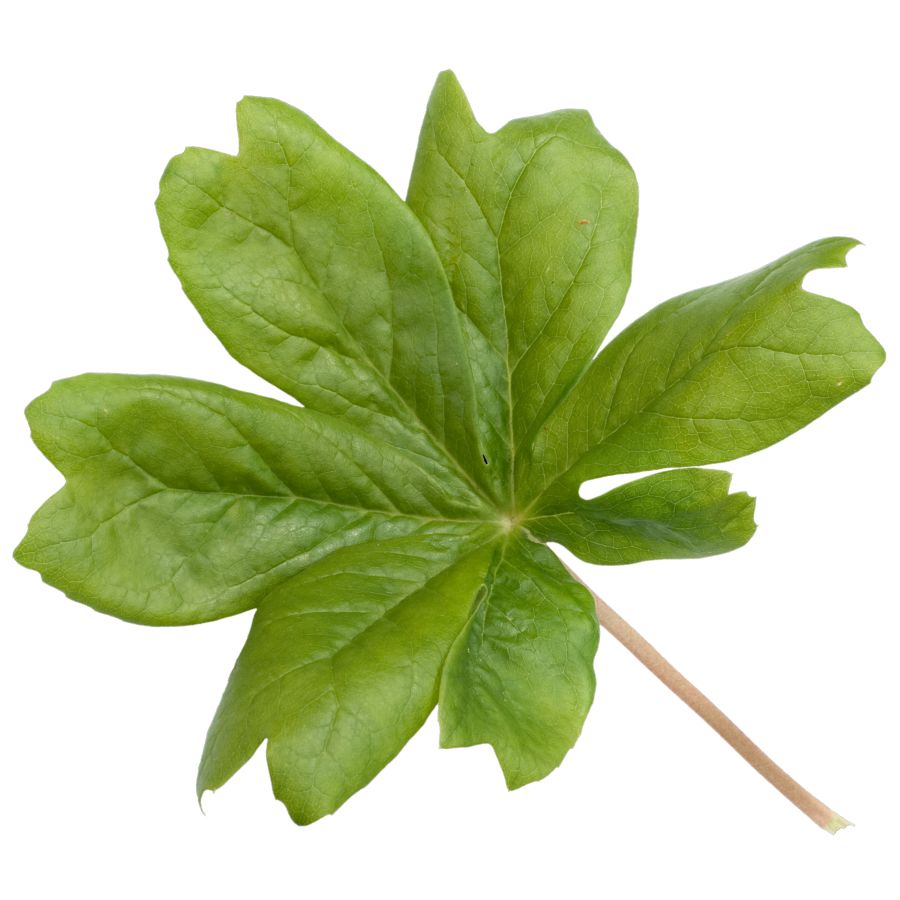
Often mistaken for: Wild grapes (Vitis spp.)
Mayapple is a low-growing plant found in shady forests and woodland clearings. It has large, umbrella-like leaves and produces a single pale fruit hidden beneath the foliage.
The unripe fruit resembles a small green grape, causing confusion with wild grapes, which grow in woody clusters on vines. All parts of the mayapple are toxic except the fully ripe, yellow fruit, which is only safe in small amounts. Eating unripe fruit or other parts can lead to nausea, vomiting, and severe dehydration.
Virginia Creeper (Parthenocissus quinquefolia)
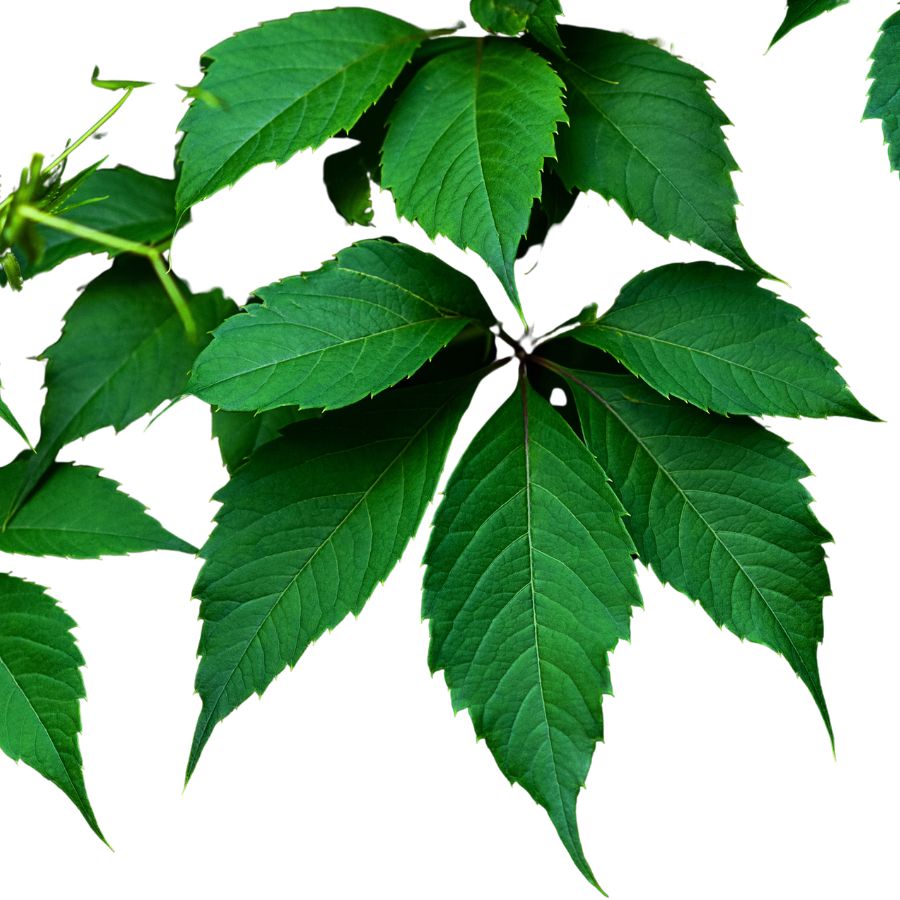
Often mistaken for: Wild grapes (Vitis spp.)
Virginia creeper is a fast-growing vine found on fences, trees, and forest edges. It has five leaflets per stem and produces small, bluish-purple berries from late summer to fall.
It’s often confused with wild grapes since both are climbing vines with similar berries, but grapevines have large, lobed single leaves and tighter fruit clusters. Virginia creeper’s berries are toxic to humans and contain oxalate crystals that can cause nausea, vomiting, and throat irritation.
Castor Bean (Ricinus communis)
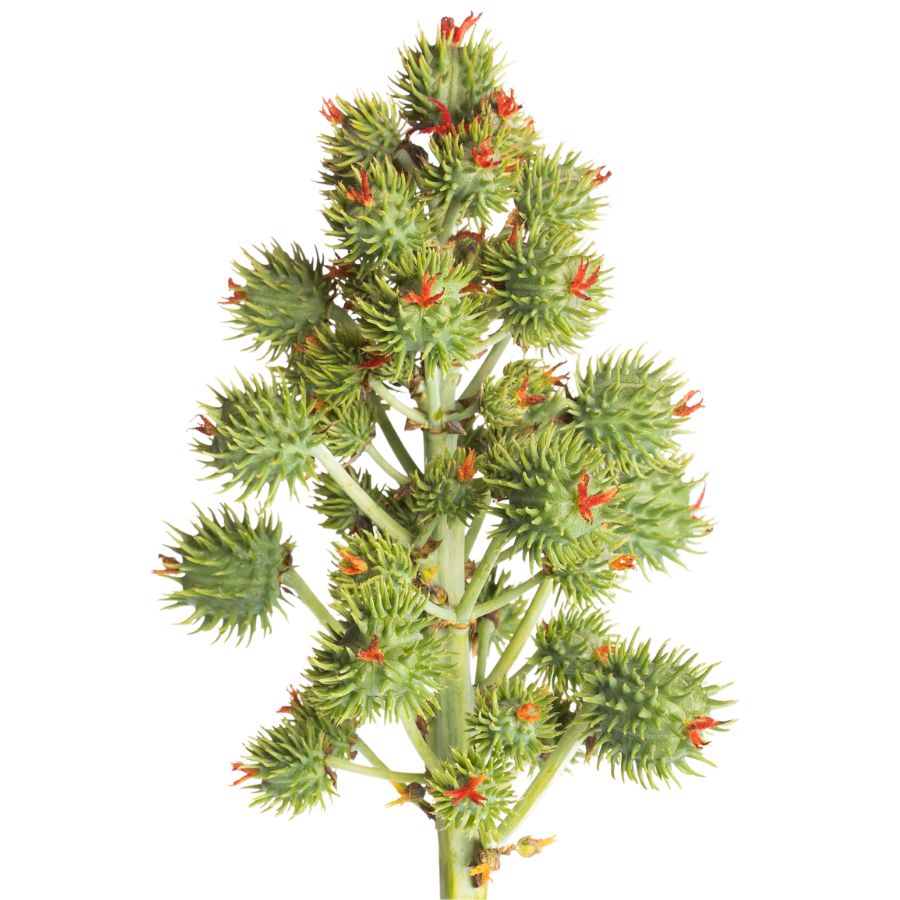
Often mistaken for: Wild rhubarb (Rumex spp. or Rheum spp.)
Castor bean is a bold plant with large, lobed leaves and tall red or green stalks, often found in gardens, along roadsides, and in disturbed areas in warmer regions in the US. Its red-tinged stems and overall size can resemble wild rhubarb to the untrained eye.
Unlike rhubarb, castor bean plants produce spiny seed pods containing glossy, mottled seeds that are extremely toxic. These seeds contain ricin, a deadly compound even in small amounts. While all parts of the plant are toxic, the seeds are especially dangerous and should never be handled or ingested.
A Quick Reminder
Before we get into the specifics about where and how to find these mushrooms, we want to be clear that before ingesting any wild mushroom, it should be identified with 100% certainty as edible by someone qualified and experienced in mushroom identification, such as a professional mycologist or an expert forager. Misidentification of mushrooms can lead to serious illness or death.
All mushrooms have the potential to cause severe adverse reactions in certain individuals, even death. If you are consuming mushrooms, it is crucial to cook them thoroughly and properly and only eat a small portion to test for personal tolerance. Some people may have allergies or sensitivities to specific mushrooms, even if they are considered safe for others.
The information provided in this article is for general informational and educational purposes only. Foraging for wild mushrooms involves inherent risks.
How to Get the Best Results Foraging
Safety should always come first when it comes to foraging. Whether you’re in a rural forest or a suburban greenbelt, knowing how to harvest wild foods properly is a key part of staying safe and respectful in the field.
Always Confirm Plant ID Before You Harvest Anything
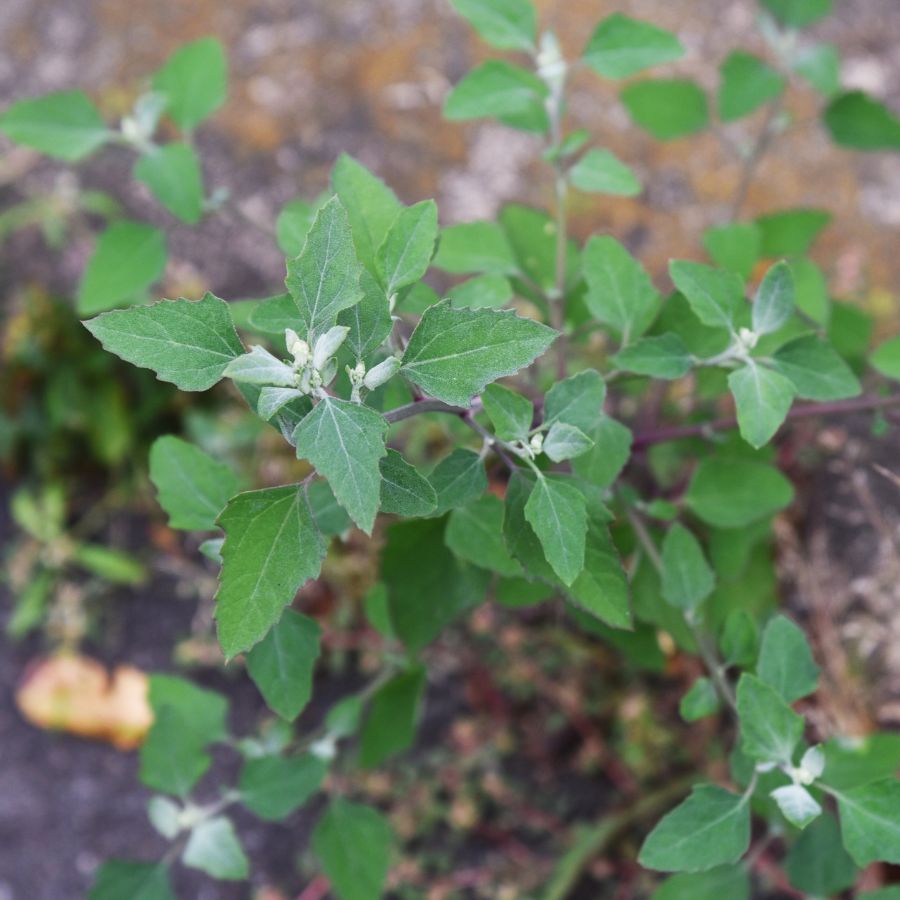
Knowing exactly what you’re picking is the most important part of safe foraging. Some edible plants have nearly identical toxic lookalikes, and a wrong guess can make you seriously sick.
Use more than one reliable source to confirm your ID, like field guides, apps, and trusted websites. Pay close attention to small details. Things like leaf shape, stem texture, and how the flowers or fruits are arranged all matter.
Not All Edible Plants Are Safe to Eat Whole
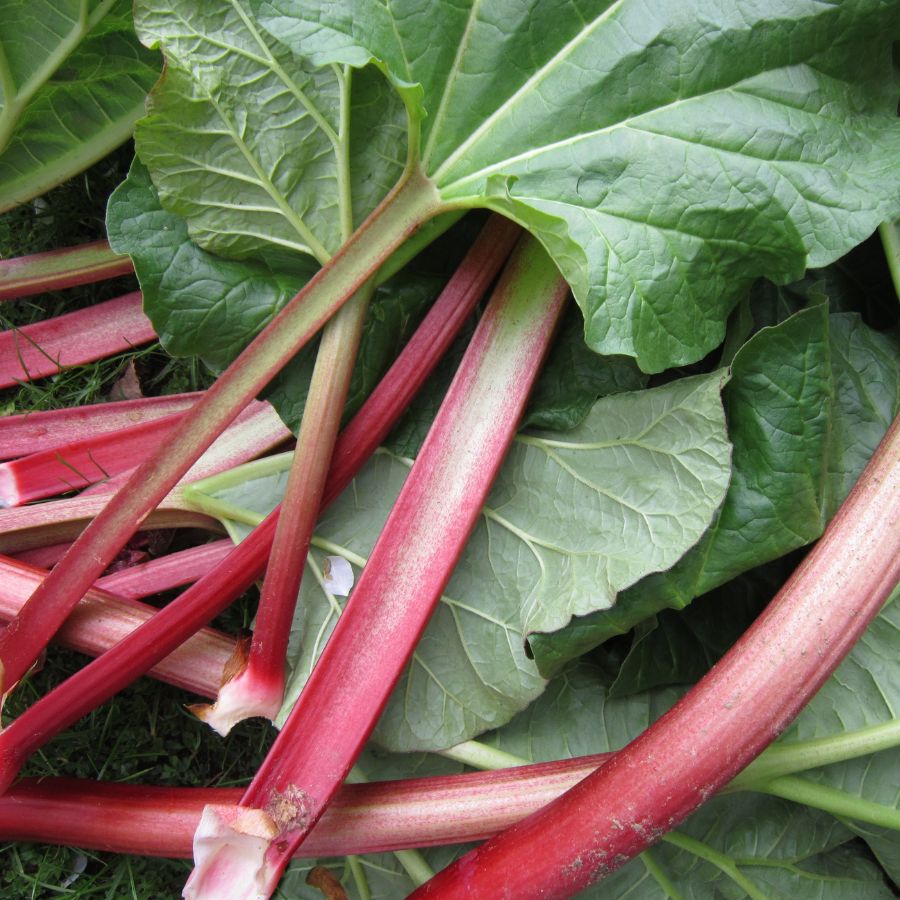
Just because a plant is edible doesn’t mean every part of it is safe. Some plants have leaves, stems, or seeds that can be toxic if eaten raw or prepared the wrong way.
For example, pokeweed is only safe when young and properly cooked, while elderberries need to be heated before eating. Rhubarb stems are fine, but the leaves are poisonous. Always look up which parts are edible and how they should be handled.
Avoid Foraging in Polluted or Contaminated Areas
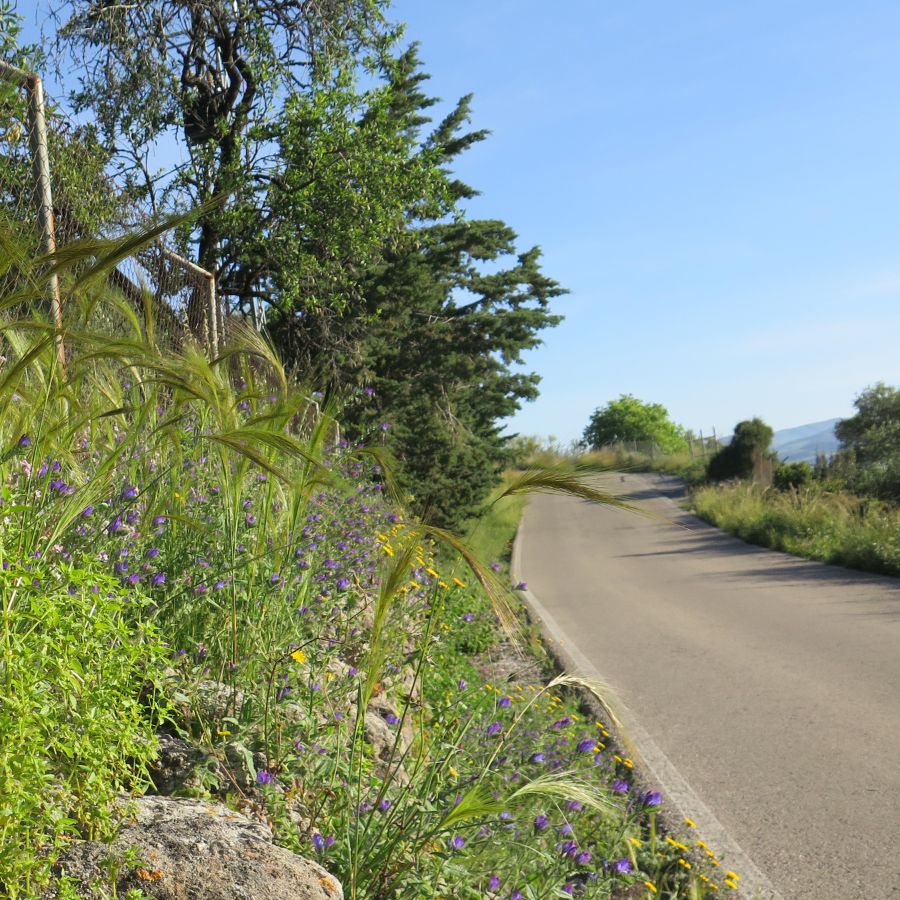
Where you forage matters just as much as what you pick. Plants growing near roads, buildings, or farmland might be coated in chemicals or growing in polluted soil.
Even safe plants can take in harmful substances from the air, water, or ground. Stick to clean, natural areas like forests, local parks that allow foraging, or your own yard when possible.
Don’t Harvest More Than What You Need
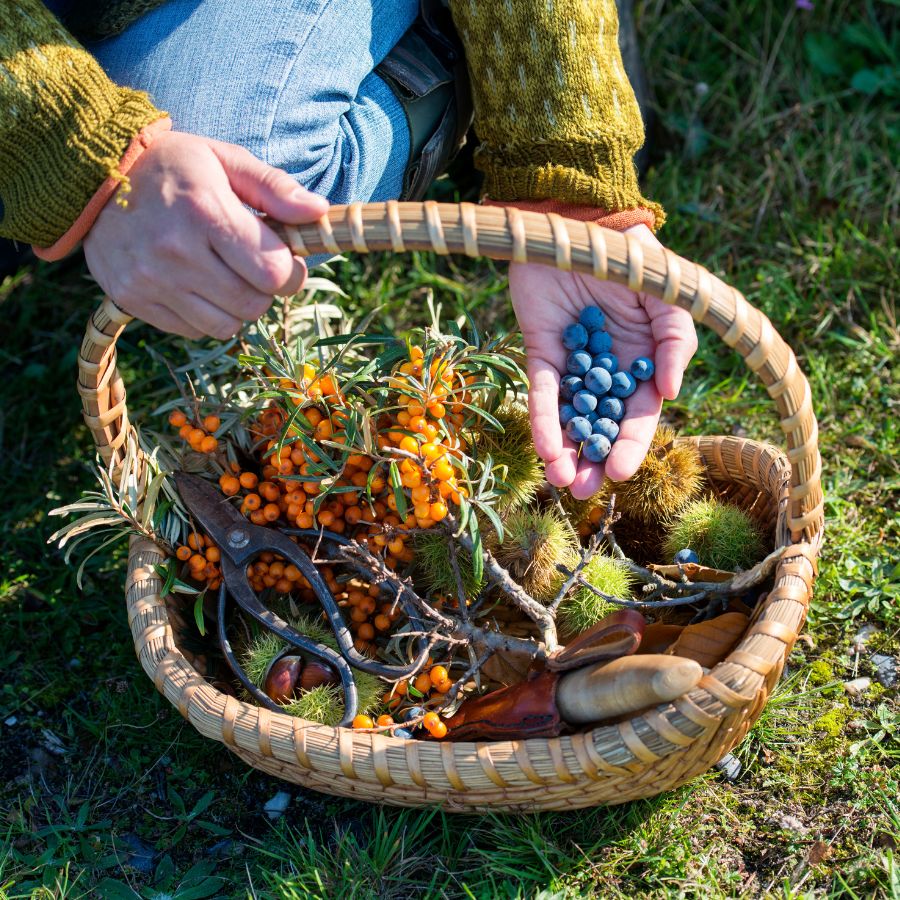
When you forage, take only what you plan to use. Overharvesting can hurt local plant populations and reduce future growth in that area.
Leaving plenty behind helps plants reproduce and supports wildlife that depends on them. It also ensures other foragers have a chance to enjoy the same resources.
Protect Yourself and Your Finds with Proper Foraging Gear

Having the right tools makes foraging easier and safer. Gloves protect your hands from irritants like stinging nettle, and a good knife or scissors lets you harvest cleanly without damaging the plant.
Use a basket or breathable bag to carry what you collect. Plastic bags hold too much moisture and can cause your greens to spoil before you get home.
This forager’s toolkit covers the essentials for any level of experience.
Watch for Allergic Reactions When Trying New Wild Foods

Even if a wild plant is safe to eat, your body might react to it in unexpected ways. It’s best to try a small amount first and wait to see how you feel.
Be extra careful with kids or anyone who has allergies. A plant that’s harmless for one person could cause a reaction in someone else.
Check Local Rules Before Foraging on Any Land
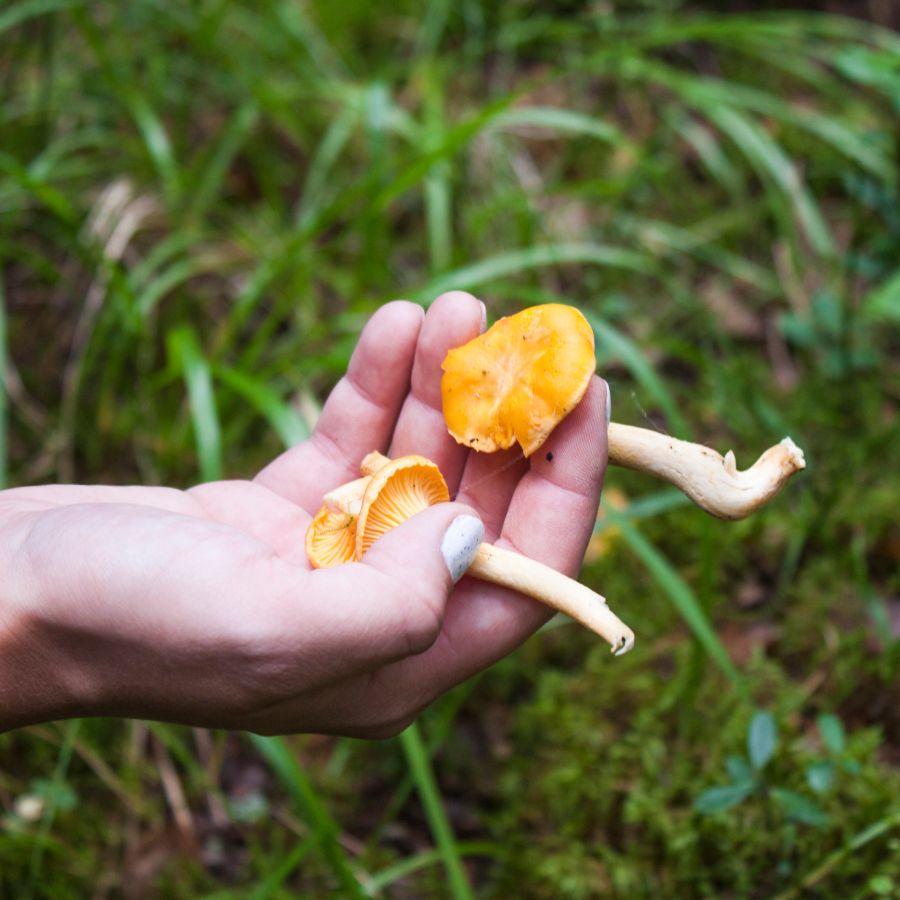
Before you start foraging, make sure you know the rules for the area you’re in. What’s allowed in one spot might be completely off-limits just a few miles away.
Some public lands permit limited foraging, while others, like national parks, usually don’t allow it at all. If you’re on private property, always get permission first.
Before you head out
Before embarking on any foraging activities, it is essential to understand and follow local laws and guidelines. Always confirm that you have permission to access any land and obtain permission from landowners if you are foraging on private property. Trespassing or foraging without permission is illegal and disrespectful.
For public lands, familiarize yourself with the foraging regulations, as some areas may restrict or prohibit the collection of mushrooms or other wild foods. These regulations and laws are frequently changing so always verify them before heading out to hunt. What we have listed below may be out of date and inaccurate as a result.
Where to Find Forageables in the State
There is a range of foraging spots where edible plants grow naturally and often in abundance:
| Plant | Locations |
| Stinging Nettle (Urtica dioica) | – Logan Canyon – Cove-N-Cache Valley – Streambeds near Salt Lake City |
| Blue Elderberry (Sambucus cerulea) | – Wasatch Mountains, Summit County – Cache County – Davis County |
| Chokecherry (Prunus virginiana) | – Wasatch Mountains – Gambel Oak Communities – University of Utah Grounds |
| Golden Currant (Ribes aureum) | – Conservation Garden Park, West Jordan – Streambanks in Canyons – Riparian Corridors |
| Serviceberry (Amelanchier alnifolia) | – Cool Canyon Locations – San Juan County – Moist Northern Slopes at High Elevations |
| Woods’ Rose (Rosa woodsii) | – Zion National Park – Wasatch Front Valley – Riparian Areas |
| Western Gooseberry (Ribes inerme) | – Mountains of Southern Utah – Wet Shrublands – Deciduous Woodlands |
| Thimbleberry (Rubus parviflorus) | – Forest Edges Near Salt Lake City – Riparian Zones – Wasatch Mountains |
| Oregon Grape (Mahonia repens) | – Semi-Dry, Gravelly Hillsides – Under Shrubs and Trees – Foothills of the Wasatch Range |
| Plains Pricklypear Cactus (Opuntia polyacantha) | – Desert Areas of Southern Utah – Sagebrush Flats – Dry Slopes in Grand County |
| Saltbush (Atriplex confertifolia) | – Great Salt Lake Desert – San Rafael Swell – Escalante Desert |
| Fireweed (Chamerion angustifolium) | – Burned Areas in Uinta Mountains – Alpine Meadows – Clearings in Wasatch National Forest |
| Shepherd’s Purse (Capsella bursa-pastoris) | – Urban Areas in Salt Lake City – Roadsides in Cache Valley – Disturbed Soils in Utah County |
| Tapertip Onion (Allium acuminatum) | – Foothills of the Wasatch Range – Open Slopes in Box Elder County – Dry Meadows in Sanpete County |
| Desert Gooseberry (Ribes velutinum) | – Pinyon-Juniper Woodlands – Yellow Pine Forests – Sagebrush Scrub Areas |
| Narrowleaf Yucca (Yucca angustissima) | – Red Cliffs Desert Reserve – Mojave Desert Regions – Zion National Park |
| Indian Ricegrass (Achnatherum hymenoides) | – Sand Dunes in Millard County – Desert Plains in Juab County – Open Rangelands in Box Elder County |
| Milkweed (Asclepias speciosa) | – Along Roadsides in Cache Valley – Meadows in Weber County – Fields in Utah County |
| Nuttall’s Violet (Viola nuttallii) | – Alpine Meadows in Uinta Mountains – Open Woodlands in Summit County – Grassy Slopes in Wasatch County |
| Wild Licorice (Glycyrrhiza lepidota) | – Riparian Zones in Sevier County – Wet Meadows in Cache County – Streambanks in Utah County |
| Bitter Dock (Rumex obtusifolius) | – Disturbed Areas in Salt Lake Valley – Fields in Davis County – Roadsides in Weber County |
| Strawberry Blite (Blitum capitatum) | – Wasatch Mountains – Uinta National Forest – Logan Canyon |
| Miner’s Lettuce (Claytonia perfoliata) | – Wasatch National Forest – Zion National Park – Uinta Mountains |
| Colorado Pinyon (Pinus edulis) | – East Tintic Mountains – Cedar City Region – Price Canyon |
| Chicory (Cichorium intybus) | – Foothills of Northern Utah – Roadsides in Cache Valley – Fields near Ogden |
| Yellow Salsify (Tragopogon dubius) | – Rangelands in Central Utah – Roadsides in Sanpete County – Disturbed areas in Weber County |
| Alfalfa (Medicago sativa) | – Cache Junction – Wellsville – Richmond |
| Arrowleaf Balsamroot (Balsamorhiza sagittata) | – Open ridges in Wasatch County – Parks in Cache County – Sagebrush areas in Emery County |
| Common Evening Primrose (Oenothera biennis) | – Moist areas in Utah County – Meadows in Davis County – Fields in Weber County |
| Wild Mustard (Sinapis arvensis) | – Roadsides in Box Elder County – Fields in Utah County – Disturbed areas in Cache County |
| Purslane (Portulaca oleracea) | – Urban gardens in Salt Lake City – Fields in Davis County – Roadsides in Weber County |
| Goosefoot (Chenopodium berlandieri) | – Fields in San Juan County – Roadsides in Tooele County – Disturbed areas in Utah County |
| Common Groundcherry (Physalis longifolia) | – Fields in Washington County – Roadsides in Iron County – Disturbed areas in Kane County |
| Sunflower (Helianthus annuus) | – Fields in Millard County – Roadsides in Sevier County – Open areas in Juab County |
| Field Pennycress (Thlaspi arvense) | – Fields in Cache County – Roadsides in Box Elder County – Disturbed areas in Weber County |
| Dock Sorrel (Rumex acetosella) | – Meadows in Summit County – Fields in Wasatch County – Roadsides in Utah County |
| Lamb’s Quarters (Chenopodium album) | – Fields in Davis County – Roadsides in Salt Lake County – Disturbed areas in Weber County |
| Wild Bergamot (Monarda fistulosa) | – Meadows in Sanpete County – Fields in Sevier County – Open areas in Piute County |
| Pineapple Weed (Matricaria discoidea) | – Roadsides in Cache County – Fields in Box Elder County – Disturbed areas in Weber County |
| Wild Mint (Mentha arvensis) | – Streambanks in Utah County – Wetlands in Davis County – Moist areas in Weber County |
| Cattail (Typha latifolia) | – Wetlands in Salt Lake County – Marshes in Utah Lake – Ponds in Davis County |
Peak Foraging Seasons
Different edible plants grow at different times of year, depending on the season and weather. Timing your search makes all the difference.
Spring
Spring brings a fresh wave of wild edible plants as the ground thaws and new growth begins:
| Plant | Months | Best Weather Conditions |
| Stinging Nettle (Urtica dioica) | March – May | Cool, damp soil; partial sun after rain |
| Shepherd’s Purse (Capsella bursa-pastoris) | March – May | Moist soil; partly cloudy days |
| Oregon Grape (Mahonia repens) | March – May | Dry, rocky soil; light spring warmth |
| Indian Ricegrass (Achnatherum hymenoides) | March – May | Sandy or gravelly soils with light spring rainfall |
| Miner’s Lettuce (Claytonia perfoliata) | March – May | Shaded, moist areas after rain, cool temperatures |
| Bitter Dock (Rumex obtusifolius) | April – May | Moist disturbed soil; sunny after rain |
| Yellow Salsify (Tragopogon dubius) | April – May | Sunny meadows with well-drained soil, post-rain growth |
| Nuttall’s Violet (Viola nuttallii) | April – June | Cool mountain air; moderate moisture |
| Tapertip Onion (Allium acuminatum) | April – June | Dry open slopes; warm daytime temperatures |
| Strawberry Blite (Blitum capitatum) | April – June | Moist soil, partial shade, cool spring temperatures |
| Alfalfa (Medicago sativa) | April – June | Sunny fields with moist, fertile soil |
| Arrowleaf Balsamroot (Balsamorhiza sagittata) | April – June | Open sunny slopes, dry air with spring melt moisture |
| Field Pennycress (Thlaspi arvense) | April – June | Disturbed soils, partly cloudy spring weather |
| Wild Mustard (Sinapis arvensis) | April – June | Open fields with moderate sun and moist conditions |
Summer
Summer is a peak season for foraging, with fruits, flowers, and greens growing in full force:
| Plant | Months | Best Weather Conditions |
| Golden Currant (Ribes aureum) | June – July | Warm, dry days; consistent sunlight |
| Serviceberry (Amelanchier alnifolia) | June – July | Full sun; slightly moist soil |
| Woods’ Rose (Rosa woodsii) | June – July | Moderate sun; moist riparian areas |
| Western Gooseberry (Ribes inerme) | June – July | Forest edges with filtered sunlight |
| Desert Gooseberry (Ribes velutinum) | June – July | Dry scrublands after early summer rain |
| Milkweed (Asclepias speciosa) | June – August | Open meadows; full sun; light soil moisture |
| Wild Licorice (Glycyrrhiza lepidota) | June – August | Moist streambanks; partly shaded valleys |
| Narrowleaf Yucca (Yucca angustissima) | June – August | Dry desert heat; full sun; rocky soils |
| Chicory (Cichorium intybus) | June – August | Sunny roadsides, dry soils, high summer heat |
| Common Evening Primrose (Oenothera biennis) | June – August | Warm evenings, loose soil, moderate summer rainfall |
| Goosefoot (Chenopodium berlandieri) | June – August | Dry, disturbed soils in full sun |
| Lamb’s Quarters (Chenopodium album) | June – August | Disturbed sunny sites, warm temperatures after rain |
| Wild Bergamot (Monarda fistulosa) | June – August | Open meadows with full sun and moderate humidity |
| Pineapple Weed (Matricaria discoidea) | June – August | Compacted soil near paths, dry weather preferred |
| Wild Mint (Mentha arvensis) | June – August | Moist, shaded streambanks or wet meadows |
| Blue Elderberry (Sambucus cerulea) | July – August | Warm days, cool nights; ripens after early summer rains |
| Chokecherry (Prunus virginiana) | July – August | Sunny slopes; post-thunderstorm growth |
| Thimbleberry (Rubus parviflorus) | July – August | Damp, shaded woodlands; mild humidity |
| Fireweed (Chamerion angustifolium) | July – August | Burned areas and meadows after early rain |
| Purslane (Portulaca oleracea) | July – September | Hot, dry urban or garden soils with little rain |
| Common Groundcherry (Physalis longifolia) | July – September | Sandy soils, warm days, occasional rain |
| Sunflower (Helianthus annuus) | July – September | Full sun, open fields with occasional summer storms |
| Colorado Pinyon (Pinus edulis) | August – September | Dry mountain air, warm days, minimal precipitation |
Fall
As temperatures drop, many edible plants shift underground or produce their last harvests:
| Plant | Months | Best Weather Conditions |
| Purslane (Portulaca oleracea) | September | Hot days, dry conditions tapering into fall |
| Sunflower (Helianthus annuus) | September | Open fields with warm fall sun and dry air |
| Lamb’s Quarters (Chenopodium album) | September | Cooling temperatures, dry soil near harvest end |
| Bitter Dock (Rumex obtusifolius) | September – October | Damp, disturbed soils; early fall dew |
| Indian Ricegrass (Achnatherum hymenoides) | September – October | Dry, breezy plains; sandy soils |
| Colorado Pinyon (Pinus edulis) | September – October | Cool, dry days; late summer drought followed by fall calm |
| Goosefoot (Chenopodium berlandieri) | September – October | Dry open fields, cooler nights |
| Common Groundcherry (Physalis longifolia) | September – October | Dry sandy soils, cool clear days |
| Wild Mint (Mentha arvensis) | September – October | Cool, moist meadows or along creeks |
| Plains Pricklypear Cactus (Opuntia polyacantha) | September – October | Dry days with cooling temperatures |
| Saltbush (Atriplex confertifolia) | September – November | Cool desert air; very low rainfall |
| Cattail (Typha latifolia) | September – November | Shallow wetlands, cool days with low wind |
Winter
Winter foraging is limited but still possible, with hardy plants and preserved growth holding on through the cold:
| Plant | Months | Best Weather Conditions |
| Shepherd’s Purse (Capsella bursa-pastoris) | December – February | Mild winter days; moist disturbed ground |
| Saltbush (Atriplex confertifolia) | December – February | Cold, dry conditions in desert scrubland |
| Narrowleaf Yucca (Yucca angustissima) | December – February | Cold desert sun; exposed rocky slopes |
| Field Pennycress (Thlaspi arvense) | December – February | Mild winter days; disturbed soil with light moisture |
| Cattail (Typha latifolia) | December – February | Frozen marsh edges, harvested roots during ice melt |
| Wild Mustard (Sinapis arvensis) | February | Early growth in disturbed soils during brief warm spells |
One Final Disclaimer
The information provided in this article is for general informational and educational purposes only. Foraging for wild plants and mushrooms involves inherent risks. Some wild plants and mushrooms are toxic and can be easily mistaken for edible varieties.
Before ingesting anything, it should be identified with 100% certainty as edible by someone qualified and experienced in mushroom and plant identification, such as a professional mycologist or an expert forager. Misidentification can lead to serious illness or death.
All mushrooms and plants have the potential to cause severe adverse reactions in certain individuals, even death. If you are consuming foraged items, it is crucial to cook them thoroughly and properly and only eat a small portion to test for personal tolerance. Some people may have allergies or sensitivities to specific mushrooms and plants, even if they are considered safe for others.
Foraged items should always be fully cooked with proper instructions to ensure they are safe to eat. Many wild mushrooms and plants contain toxins and compounds that can be harmful if ingested.

